#we get to see benedict portray three different characters
Text

You’re Invited to a Wonderful Week of New Wes Anderson Shorts This September
We now have more details via Tudum.
The shorts will be released in equally unique fashion, with one film a day hitting the service starting with Henry Sugar on Sept. 27. The Swan, The Ratcatcher, and Poison will follow on Sept. 28, 29, and 30, respectively. That’s a week of Wes Anderson you won’t want to miss. Each film stars a rotating cast of actors taking on multiple roles.
The Wonderful Story of Henry Sugar - Wed., Sept. 27
The Swan - Thur., Sept. 28
The Ratcatcher - Fri., Sept. 29
Poison - Sat., Sept. 30
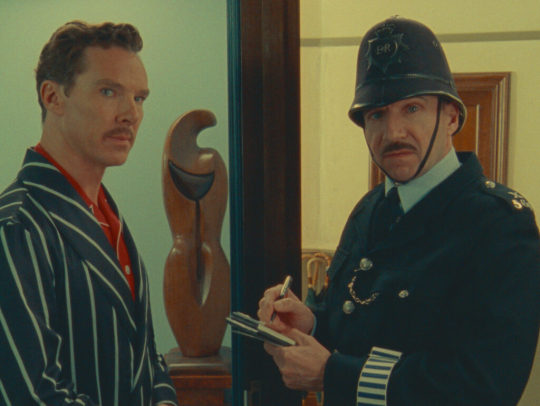


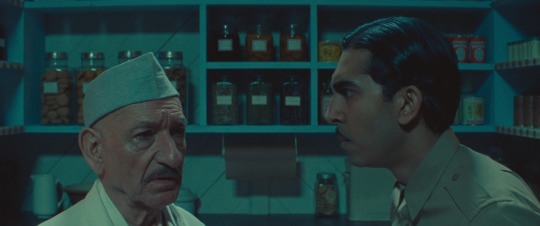
#the wonderful story of henry sugar#benedict cumberbatch#ralph fiennes#ben kingsley#dev patel#wes anderson#netflix#promo stills#we get to see benedict portray three different characters#this is exciting!!!#roald dahl#mine:news
216 notes
·
View notes
Text
“Worth Dying For”, by Matilda Madison

I read this book from NetGalley in exchange for a fair and honest review
4/5 STARS
When I knew of “Worth Dying For” being published soon I thought it would be the last installment of the “Worth” series with the three Powell Siblings (Edward, Catherine and Lydia) as the protagonists, now I’m hoping Lydia’s book is not the last one, for there is a character whom I’d love to know more of, but that’s a story for another day.
Matilda Madison sets the cards for this round in the introduction. This part is set three years prior to the events in the previous book and this book as well. Lydia is the youngest of the Powell siblings who was mostly overlooked by her cruel father who had been a monster to Edward and Catherine. The two had taken charge of her after the man died and they’ve spoiled her a little. Lydia has a strong personality, she’s impulsive, and she’s used to get what she wants, but she’s sweet and lovable and quite generous too. As it happens, Lydia is quite attracted to Benedict Davies, the Marquis of Quinton and her brother’s best friend, so once at a ball she asked him for a kiss… and he refused. They’ve been enemies ever since.
Benedict spends three years constantly in and out of the Powell’s company. The day he refused to kiss Lydia had been one of the most difficult days of his life because he is attracted to her and he’s not the right man for her. He’s a rake with the most notorious fame, but he’s also loyal to a fault and as mischievous as Lydia is. When he reads in the papers of a surprise engagement with himself and Lydia as the protagonists, he decides to make it true by seducing her and trapping her into marriage, anyway no one believes it wasn’t her who published it.
They move to his ancestral home and there they begin their marital life with the sole company of a very grumpy young man, William, Benedict’s brother who, due to a sickness long ago, is in a wheelchair. Miscomunication, lies and misunderstandings added to Benedict’s difficult past and someone threatening Lydia, won’t make life easy for the couple but the chemistry between them is explosive and their love is tattooed in their hearts since the kiss that never was.
I read once that reformed rakes make the best husbands, and in this book that is the case. At the beginning I thought that Lydia was very well portrayed because she’s very straightforwards, she is who she is and that’s clear from the beginning. But with Benedict it was like unwrapping a present. He introduced himself as the kind of rake we read about in every other novel, but then he surprises the reader by showing his feelings and thoughts and how deeply he loves Lydia and has loved her since always. He’s so protective and caring, though sometimes he patronizes her, which is exactly what she needs to grow out of her spoiled personality. He helps Lydia mature but not in an overbearing way, Lydia blooms as a woman, not because of him but with him, because he lets her be herself. The Lydia we see in the second half of the book is slightly different to the Lydia that lived under her brother’s wing. She’s more realistic than the hopeless romantic child she was, she’s more understanding and a little less impulsive.
The writing in this book matches Lydias vibrant personality, that’s how we get to meet her well. The pace changes with her moods and make a perfect picture of what’s happening all the time. Then I think that Matilda Madison writes like magic because she appeals directly to her readers’ hearts with her beautiful writing and the way she delivers her characters feelings of love, doubt, worrying, strength. Her words fly out of the page and takes us into the book making us Benedict’s and Lydia’s secrets keepers. This is exactly the kind of writing that I love the most, the kind that makes you participate of the story and even though she did write her previous book in the same way, she still managed to surprise me. I’m now going to read the first book which is the one I’m missing, while I wait for her to write about… oh, spoilers.
#Romance review#Historical romance#review#book review#Matilda Madison#Worth series#romance books#romance community#romancelandia
1 note
·
View note
Text
So, in elementary school, my best friends and I all read The Mysterious Benedict Society books together and adored them. We even wrote fanfic of them all grown up with kids together. Needless to say, we were excited, yet cautious for the disney+ show.
The friend I still talk to spent the night and we binged the entire show together and we were both very impressed
All of my thoughts with spoilers for the books and show under the cut
It's all random rambling from here on out
The Great Kate Weather Machine
She was always our favorite character. Once on a fourth grade field trip we had to make something that I'm pretty sure was wind adjacent in groups and my friends named our project "The Great Kate Weather Machine." So we were worried about her portrayal in the show, but we didn't need to be at all. The actress did great and we loved everything about her, from her shoes to the beanie she always wore.
Kate x Martina
Either during episode two or three (I can't remember since we binged it), but it was one of the very first times we saw Martina and se was interacting with Kate and my friend just says "enemies to lovers." Thinking the show would be more similar to the book than it actually was, we decided it would be a fun crack ship. We were happy to see Martina get more development as the season went on and then Martina saved her gf from being barged by using "tetherball, the pride of the Institute." They could not of picked a better sport than tetherball, it was perfect.
So, we don't think it's a crack ship anymore and we are fully invested. The Martina and Kate bonding moments were wonderful. When Martina gave Kate the little tetherball I knew she was already fully in love. Then, when Kate was helping her get away at the end, it was so sweet, until Martina realized she'd been betrayed and my heart was ripped out.
Milligan
He was wonderful in the show. We loved how the tone always shifted when he was doing something and his colors were darker than everyone else and we LOVED that scene where it's slowly zooming in on him and the background is getting darker and darker.
Connie Girl (section title credited to Kate never calling her that in the show)
At first we were worried about her and missed the classic red coat, especially since we would tease one of my friends about being Constance for wearing a red coat that was too big on her. But, I could not have asked for a better portrayal of her. I would have liked a little more of her backstory and to know if the character was aged up at all, but overall, I'm really happy with the way Constance turned out.
Reynie
Out of all the characters, Reynie was most similar to the books, so I don't really have much to say. He was good and I'm happy with the character, I just don't have that many opinions on him.
SQ
Though, I did like his relationship with SQ. Out of all of the changes SQ is the one I think I'm most conflicted about. My friend and I were really confused when they were mentioning SQ at the beginning, but once we figured out he's a different character with the same name, he became a lot more lovable. I miss the old SQ, but the new one is a good character too and I really like that he got to befriend Reynie. Bonding over their shared love of art was really sweet.
Miss Perumal
She was AMAZING and I love that she got to go meet up with Mr. Benedict and the other adults to help out. It was great to see more of her and to follow her into the rest of the world beyond just The Institute and Mr. Benedicts friends. And of course any scenes with her and Reynie were adorable and make me so happy.
Sticky Washington
I don't know why they changed his backstory to be his aunt and uncle instead of parents, but that wasn't too big of a deal. I wish they had done more with his character since I feel like his plotlines were dropped more than anyone else's. The Waiting Room was one of the most memorable things Sticky did in the first book and I get why they could have had reasons for changing it, but the new Waiting Room doesn't leave the same awful feeling.
Rhonda and Number Two
I love what the show did with their characters and am so happy they got more character and plotlines. The way they bounced off of each other was perfect! They're dynamic, just- *chefs kiss.* As we were getting more excited about their relationship, I pointed out that Number Two's color scheme was mostly yellow and orange while Rhonda's was mostly purple and pinks and asked my friend what that made. She, a lesbian, immediately got it and we ship it. Later, when they were agreeing more and their outfits would coordinate a bit (both wearing turtle necks or jackets with the same cut) and they would start getting little pieces of the other's colors.
Mr. Nicholas Benedict
He was a lot more eccentric than we were expecting and when he was first explaining what was going on, he gave us conspiracy theorist vibes, though overtime I think his character got better.
Dr. Curtain
At first we really weren't sure about his portrayal since his narcolepsy was almost completely removed from the show until the end. He wasn't in his wheelchair nor have the sunglasses to hide his sleeping and was overall a lot more calm. It made him a different type of scary than he was in the books. I would have loved for him to be more similar to the book version of him, but it still worked.
Jackson and Jillson
They were so creepy and could not have been portrayed better.
Other Thoughts
I really liked the overall look and feel of the show. The color pallets for the characters were all amazing and overall the costumes were all great. I loved getting to see past just what Reynie was doing and what he knew to what the other kids were up to all the time and the adults and what was going on in town.
Conclusion
Me and my friend really liked the show and with the exception of a couple of the changes were very happy with the entire thing. We're hoping for a season two, especially with that ending, and will definitely binge it if we get one.
#the mysterious benedict society#mbs disney spoilers#kate wetherall#martina crowe#martina x kate#reynie muldoon#sticky washington#constance contraire#nicholas benedict#ld curtain#nathaniel benedict#rhonda kazembe#number two#rhonda kazembe x number two#the great kate weather machine#connie girl#sq curtain#milligan wetherall#jackson and jillson#miss perumal
69 notes
·
View notes
Text

Pilot/Episode 1: Patching Things Up With Pastiche & Fanfiction
Hi, hello, and the wait is finally over! My name is Blessie, and welcome to the first episode webisode log installation I've decided to call these things an episode for now because why not also let me know what do you actually call these things episode of The Science of Fanfiction, where we take a closer look into our beloved works of fanon because we've all got plenty of time to spare till Season 5. Before I continue, I would like to thank everyone who's liked and reblogged the last few posts before this one. It means a lot for a small and growing Tumblr user like me, and your support is something I cherish more than my modules. You guys rock!
Anyways, like with most things, we have to talk about the boring and bland stuff before we proceed with the fun stuff. For today, we are going to settle the difference between a couple of things: first being the confusion between pastiche and fanfiction; then the distinctions between tropes, clichés, and stereotypes, which we'll tackle the next time. It's important for us to establish their true meanings in order for us to really understand what fanfiction truly is, even if it's merely just a work done for the fandom. I know – it's boring, it's something that shouldn't be expounded that much, but I believe that all forms of writing (unless it's plagiarised) is a work of art — and fanfiction is not something we always talk about. I hope that by the end of this, you'll learn about what they really are as much as I did. Let's begin to talk about the—

[Image ID: A flashback of John (left) and Sherlock (right) finding an elephant (not in the screen) in a room in The Sign of Three. End ID]
. . . I did say that this GIF will always have to make an appearance here, didn't I?
So, just as with Sherlock Holmes, all other works of fiction have their own pastiches and fanfiction, and many more original works out there have taken inspiration from them to create their own books. Although they've gained popular attention, this will not be possible if they did not have taken inspiration from the materials their writers had at the time.
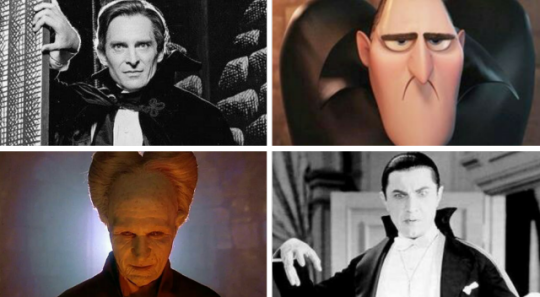
[Image ID: Various actors as Dracula. Jeremy Brett in 'Dracula' (1978) (upper left), Adam Sandler in a voice role for 'Hotel Transylvania' (2012) (upper right), Gary Oldman in 'Dracula' (1992) (lower left), and Bela Lugosi in 'Dracula' (1933) (lower right). End ID]
For instance, Bram Stoker's 'Dracula' (the second most adapted literary character, next to the consulting detective himself) has been portrayed on the screen over 200 times — from Gary Oldman to Adam Sandler — and has spawned off numerous books and pastiches of its own such as Stephen King's 'Salem's Lot'. Its cultural impact served as a basis of how we see vampires today, since some characteristics of the Count were made by Stoker himself. Stoker's creation is the brainchild of his predecessors and inspirations.

[Image ID: Vlad the Impaler (left) and a book cover of 'Carmilla' by J. Sheridan Le Fanu (right). End ID]
Other than the ongoing hysteria over dead back then and the existing vampire folklore, Stoker also took his inspirations from the published books on vampires he had at hand. He is said to have taken inspiration from Vlad the Impaler, a Romanian national hero known allegedly for having impalement as his favourite method of torture. He is also said to have been inspired by the J. Sheridan Le Fanu's 'Carmilla', a Gothic lesbian vampire novella that predates Dracula by 26 years. I could go on, but hey, we're going back to Sherlock Holmes now before I deviate any further. However, if you want to know about Dracula's literary origins, I suggest you watch Ted-ED's videos about the subject matter such as this one or this one.
Very much like Stoker, ACD didn't just conceive Holmes on his own. He took his own inspirations from what he had available at the time.

[Image ID: Dr Joseph Bell (left) and Edgar Allan Poe (right). End ID]
As we all know, ACD's biggest inspiration for Sherlock Holmes was one of his teachers at the Edinburgh University, Joseph Bell. He was famous for his powers of deduction, and he was also interested in forensic science — both characteristics which Holmes is greatly known for. He also drew inspiration from Edgar Allan Poe's sleuth, C. Auguste Dupin ('The Purloined Letter' & 'Murders in Rue Morgue'). As ACD himself has said at the 1909 Poe Centennial Dinner: "Where was the detective story until Poe breathed life into it?" Some other writers he took after are Wilkie Collins, Émile Gaboriau, and Oscar Wilde.
Now, what does this say about us Sherlockians/Holmesians (depending if you're the coloniser or the one that was colonised)? Basically, ACD laid the groundwork for us with Sherlock Holmes: his humble abode 221B that he shares with his flatmate Dr. John Watson, his adventures, memoirs, return, casebook, last vow, and all that. Now that we have this material at hand, we can now make our own versions, takes, or even original stories featuring the characters of the Canon. Our inspiration comes from ACD's Sherlock Holmes, and we now get the chance to make our very own stories/conspiracy theories about them.
As I have mentioned earlier, Sherlock Holmes is the most adapted literary character in history. He has been adapted in over 200 films, more than 750 radio adaptations, a ballet, 2 musicals; and he's become a mouse, a woman, a dog, even a bloody cucumber. On top of all that are numerous pastiches and fanfics, and finally, we have arrived at the main topic of our post!
Fanfiction and pastiche are often confused together since they have three common elements: they take after the original work, they usually use the characters in that original work, and more often than not do are they set in that same time frame/period or not long after that. The common misconception is that pastiche are printed fanfiction, which is only partly true. While pastiche is definitely fanfiction in some ways and vice versa, there are fanfictions out there that aren't necessarily classified as pastiche that have been published.
Let's get on with our definition of terms to clear up the confusion a little more. Pastiche, according to Literary Terms, is:
. . . a creative work that imitates another author or genre. It’s a way of paying respect, or honor, to great works of the past. Pastiche differs from parody in that pastiche isn’t making fun of the works it imitates – however, the tone of pastiche is often humorous.
A good example of a pastiche is Sophie Hannah's 'The Monogram Murders', which is her take from Agatha Christie's Hercule Poirot.
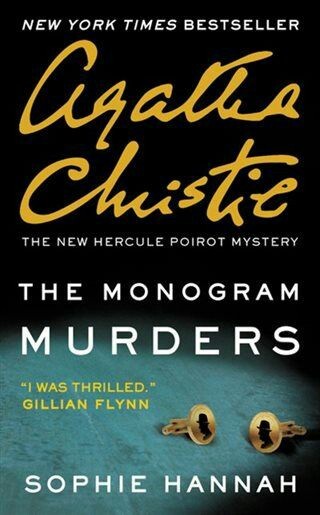
[Image ID: A book cover of 'The Monogram Murders' by Sophie Hannah. End ID.]
Although this was a commission from Christie's estate, it's still considered as a pastiche as:
It's takes after Christie's writing style;
It is set in the early years of Poirot's career (1929), which is still within the time frame that the author wrote him in;
It features Poirot and;
It pays respect to Christie in a sense that it stays true to her (Christie) characters and way of storytelling.
Meanwhile, our good and slightly unreliable friend Wikipedia defines fanfiction as:
. . . is fictional writing written by fans, commonly of an existing work of fiction. The author uses copyrighted characters, settings, or other intellectual property from the original creator(s) as a basis for their writing. [It] ranges from a couple of sentences to an entire novel, and fans can both keep the creator's characters and settings and/or add their own. [ . . . ] [It] can be based on any fictional (and sometimes non-fictional) subject. Common bases for fanfiction include novels, movies, bands, and video games.
To avoid any copyright infringement issues if I ever use a popular fanfic in the fandom, we'll use my (unfinished and unpopular) Sherlock Wattpad fic, 'Play Pretend'. You can read it here.
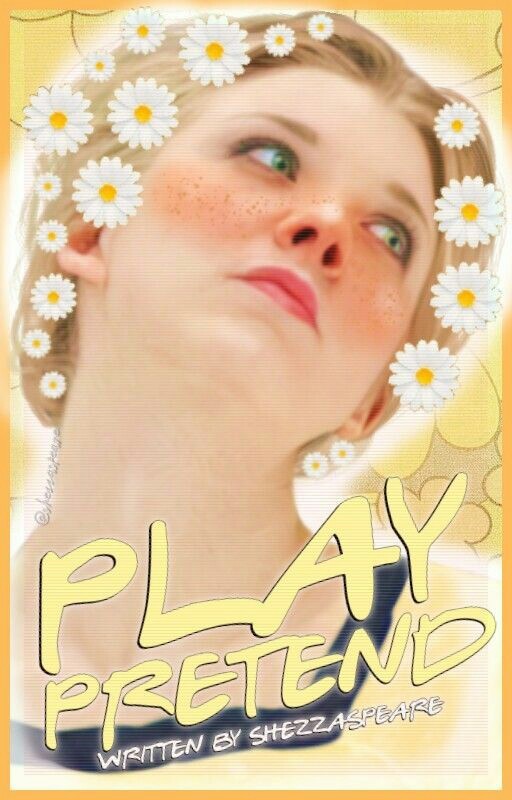
[Image ID: The second self-made book cover of Blessie/shezzaspeare's 'Play Pretend'. End ID]
Why is it considered a fanfiction and not a pastiche?
It takes after an adaptation of Sherlock Holmes (BBC Sherlock) which is a TV show, not the ACD canon itself;
The author (in this case myself) uses her own writing style and does not take after the original story's style;
Although it is set well in modern-day London and after Season 4, it also features scenes decades before the actual fanfic is set and outside of London;
I added a considerable number of characters, i.e. siblings to canon characters;
I had my own take some of the canon characters' personality especially after the events of Sherrinford;
It is written by a fan – myself. It is a work of fan labour and;
It is only a work of fanon, and isn't likely going to be considered by the show as its writing style is different from the actual show.
To put it simply, you can have more freedom in a fanfiction as it does not necessarily restrict you to follow or take after the original stories. Alternate universes (AUs) such as Unilock and Teenlock are perfect examples of this thing.
So can a pastiche be classified as fanfiction? Yes.
Can a fanfiction be classified as pastiche? Not all the time.
What's the difference? While yes, they share the basics, pastiche is technically leans more onto the original work's fundamental elements whereas fanfiction is a broader range of works inspired by the original work but doesn't necessarily follow all or any of its fundamental elements.
In order for us to understand it more, I'll give another example.

[Image ID: The 'Enola Holmes' title card (upper left) and Henry Cavill as its Sherlock holmes (upper right). Underneath it is a a scene from the opening titles of BBC Sherlock (lower left) and Benedict Cumberbatch as Sherlock Holmes in A Scandal In Belgravia. (lower right) End ID]
Most of you are familiar with these 21st-century adaptations of Holmes: the 2020 adaptation of Nancy Springer's Enola Holmes books and BBC Sherlock, which needs no further explanation – but for those who don't know, it's basically Holmes and the gang if they were alive today. I specifically chose these two as they are the ones that I believe would get my points across best. Though both are considered as wonderful pastiches with a well-rounded cast and awesome visuals, if we break them down bit by bit, we'll see which one is more of a pastiche and which one is more of a fanfic. (Yes, I know they're both screen adaptations. However, as Enola Holmes was based on the books and BBC Sherlock's fanfiction has the show's scenes written out in most fanfics, hear me out.)
They share these characteristics of a pastiche:
They feature characters from the Canon (Sherlock Holmes, Mycroft Holmes, and Lestrade);
They have additional characters added by the writers (Including but not limited to Molly Hooper, Eurus Holmes, and Philip Anderson for BBC Sherlock while Enola Holmes has Lord Tewkesbury, Eudoria Holmes, and Enola herself) and;
They pay respect to the original Canon as their stories are based on the cases (BBC Sherlock) or simply what was going on around them (Enola Holmes).
They also share these characteristics of a fanfic:
They are made by enthusiasts of Sherlock Holmes (Moffat has called himself and Mark Gatiss 'Sherlock Holmes geeks', while Nancy Springer's Enola Holmes books are not just one or two but six);
They follow a common trope (we'll discuss these tropes in the following episodes) that goes on in the fandom (Sherlock's Sister & Modern AU)
They are based on a fictional subject (Sherlock Holmes);
They used characters and story elements that are copyrighted by the author/author's estate (fun fact: prior to the production of Enola Holmes, the Conan Doyle Estate filed a lawsuit against Springer & Netflix over Sherlock's emotions since he was more 'sympathetic' than he was portrayed in the Canon – this was later dismissed by both parties) and;
Their writing styles don't necessarily follow ACD's.
Despite these similarities, there are very obvious differences between the two that separates them from being a pastiche and a fanfiction.
Enola Holmes embodies pastiche more as it doesn't stray far away from the original elements of the Canon. It's still set in Victorian England. While Springer added characters of her own and definitely twisted the Canon to suit her series, she didn't necessarily place them out of the social construct that was going on around the characters. It follows ACD's writing style more as Enola Holmes' setting still remains within the Canon's original setting.
Meanwhile, we can safely say that BBC Sherlock is a work of fanfiction. While it did give us The Abominable Bride, the main series focused on Holmes and Watson in 21st-century England, which is drastically different from Victorian England. There are phones, black cabs, and cellphones — things which ACD Sherlock Holmes doesn't have. It also diverted from the Canon in the characters themselves, which is mostly seen in the names: Henry Baskerville became Henry Knight, Charles Augustus Milverton became Charles Augustus Magnussen, the H in Dr Watson's name stood for Hamish and Sherlock's full name is actually William Sherlock Scott Holmes. They also changed the personalities of some Canon characters: Mary was actually an ex-assassin, Mrs Hudson was an exotic dancer who drove a kick-ass sports car, Irene Adler is a dominatrix, to name a few. Moffat and Gatiss created a world of their own featuring the characters of Sir Arthur Conan Doyle, which is really what most of us fanfic writers do with Mofftiss' rendition of Holmes.
In conclusion: while pastiche and fanfiction could have been the same thing, they're actually not. There's more to them that just printed fanfiction or pastiche e-books, and we all should take some time to see and observe them in a closer perspective.
And that's it for our first episode! I hope you enjoyed it. It was a lot fun for me to write this, especially now that I'm only starting. I would also like to note that while intensive research has been done on this series, some parts of this comes from my own observation and opinion, which may vary from yours. I am very much open to criticism, as long as it is said in a polite and civil manner. I'm still young, and to be educated as I go is something that could really help me with this series.
Like and reblog this you like it. It helps out a lot. Be sure to follow me as well and the tags underneath if you want to see more of TSoF.
See you soon!
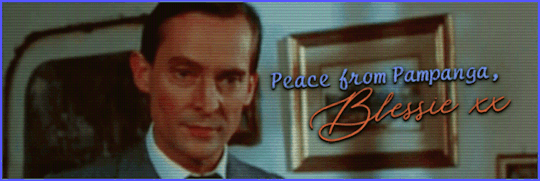
Blessie presents – The Science of Fanfiction: A Study In Sherlock (2021) • Next
Follow me! • My Carrd | My YouTube Channel
SOURCES • Pinterest, Google Images, Wikipedia, Literary Terms, Conan Doyle Estate, Definitions, The Sherlock Holmes Book, and Google
#the science of fanfiction#sherlock#sherlock holmes#johnlock#bbc sherlock#dracula#enola holmes#lord tewkesbury#jeremy brett#shezzaspeare#bram stoker#acd#canon#fanfiction#pastiche#holmes#adlock#sherlolly#molly hooper#greg lestrade
91 notes
·
View notes
Text
Femininity and Bridgerton
So 27 days ago a lovely anon said that they’d be glad to hear my thoughts on femininity and Bridgerton, and since I’m now finally free from school I decided to stop playing Genshin Impact and binging Disney movies and actually do something.
This is going to probably be very long (spoilers it’s 1,800 words long), so more under the cut.
So, a few things. Firstly I am specifically talking about Bridgerton, as the way that femininity is portrayed in media is a very complex and arduous topic. Secondly this is obviously just my opinion and you can absolutely disagree, even tell me if you do I love listening to different perspectives. Thirdly I’m talking about a show that is very heteronormative (the painter and Benedict aside as I’m focusing mostly on Daphne in this post), and presents a very specific part of straight, cis, upper class femininity. So keep that in mind as well. Also as I’m going to be talking about patriarchy, femininity, and masculinity I know that there might be a few TERFs that crawl out of the woodwork and just… don’t. This isn’t for you and while I’m at it please go read some actual feminist texts. Also I know that this is a period piece but I will be addressing that don’t worry.
Also I am going to be talking about that one scene so trigger warning I’m going to be talking about sexual assault.
Also full Bridgerton season one spoilers.
----
So, all that set up out of the way, let’s talk about femininity in the Bridgerton series.
A good deal of Bridgerton focuses on the ways in which women are often confined by their role as women in society, as well as how they subvert that role for their own gains. This is used well in some cases, such as when the Viscountess uses the network that is forged between servants and women of the upper class to subvert Daphne’s marriage to Nigel Berbrooke. Being a period piece with a (mostly) diverse cast it also allows for women of color, specifically black women, to be portrayed in a very feminine light, where in society at large they are usually not allowed to inhabit such a space. However in attempting to subvert the status that women often occupied in Regency England the show accidentally reinforces views of femininity and its value.
Let’s talk about Eloise and Daphne. Eloise is very outspoken about the difficulties that comes with being a woman in society, wishing to break out of the confines of femininity. Daphne, on the other hand, wishes to stay within the traditional woman’s sphere, get married, have children, run a household. And while in text these two women often debate the meaning of their position as women, each making very valid points about their status and how they’re confined by it, the framing makes it seem that Eloise’s position is ultimately the “better” one.
Full disclosure, Eloise is my favorite Bridgerton character. I love her outspokenness, her determination to make something out of her life, the fact that she attempts to make the oppression of the society around her explicit. However I think the way she is framed as this, for lack of a better term, “girlboss” in the making is often reductive. The show seems to have this idea that Daphne is in some ways inferior in goal to Eloise. That is, Eloise’s value isn’t that she is an ambitious person whose status as a woman hampers said ambition, but rather that she is in some ways morally and intellectually superior to Daphne by rejecting her femininity and repressing qualities that are considered less masculine and thus lesser.s It presents this idea of women’s empowerment wherein one is only empowered if they deliberately step out of traditional femininity, either in appearance or in life path, rather than confronting a society that sees femininity as inferior. Daphne’s wish to continue in the traditional sphere of womanhood is somehow lesser, and she only becomes truly empowered later in the series when she becomes more aggressive (we’ll talk about that later).
That Eloise has her own book where she presumably falls in love and gets married makes this all the more confusing. Does she then lose her intellect and her status as an empowering woman? The messages feel very mixed. In portraying Eloise as enlightened for actively resisting the woman’s sphere and Daphne as needing to learn to be more “assertive” to gain said enlightenment, the show accidentally presents femininity as inherently passive, inferior to the assertion that is more traditionally masculine. This is something that modern period dramas often fall into. Empowered women are only empowered by attempting to transcend their femininity, to become more masculine. The bottom line isn’t to present women and femininity as equal in all ways to men and masculinity, but femininity is something reductive that must be shed to truly become equal.
Since we’re talking about Daphne I want to examine her character arc within this lens as well. Daphne is adamant that she wants a love-match. She is also very aware of the importance of presentation, as well as the importance of reputation. This is a very solid foundation, as is a way where Bridgerton taps into the complexity of the role of women in regency society in a good way. However as the show goes on this complexity seems to fade in favor of making Daphne, again I’m sorry, a “girlboss”. This is made explicit in the scene in which Daphne violates Simon’s consent, as well as the way in which this act is framed.
Now you can tell immediately from the framing of the scene in which Daphne violates Simon’s consent what this is supposed to be interpretated as. From the music to the triumphant looks on Daphne’s face, this is supposed to be a moment in which Daphne has finally gained control of her life. And yet in doing this, and in presenting this whole scene as a result of Simon’s “betrayal” – and thus something his has to take the blame for – the show is making a value judgement. Daphne can only become strong by becoming “assertive” (ie aggressive) to the point of violating someone’s consent.
The topic of rape culture is a very long and arduous one which I will not be diving into, but I do wish to point to the fact that men are supposed to be aggressive, both sexually and otherwise. Men are the ones who always “want it”, who are uncontrollable, and who are willing to be aggressive to get what they want. This toxic idea of sex and masculinity is what I felt Daphne dipped into during this scene, and instead of presenting it as horrifying or a betrayal on Daphne part, it is presented as the climax of her character arc. I believe a showrunner once said that it was imperative to the “education” of Daphne Bridgerton. Thus is Daphne’s strength no longer her determination to be happy within the sphere she has been placed in by patriarchy, but her willingness to take back her life, no matter the cost. And yes this could’ve been a message about how men are also assaulted, but that is not at all what the showrunners wanted you to get out of this scene.
Lastly I want to touch on the men in the Bridgerton universe, because the devaluation of femininity also affects men no less than it does women. All the men in the Bridgerton universe are either bad people or rakes. Name me one (1) man in the Bridgerton universe who is presented as feminine, either in appearance or personality. And no femininity is not the same as being gay, the painter is not feminine. To be a man worthy of screen time or romance in the Bridgerton universe one must be as traditionally masculine as possible, and ready to make that your defining character trait.
Now I know that this is a large romance novel issue, as someone who has read three of the Outlander books I am unfortunately aware of how romance novels fall into this derivative state. But just because something is common that doesn’t mean it is any less worthy of criticism. The argument that it’s simply being “period accurate” is also something I don’t accept. Yes the regency era was incredibly patriarchal, but that does not mean that the women within it were helpless and could only break out of that helplessness by rejecting their own femininity. Jane Austen is a classic example, but I will also point to women such as Elizabeth Gaskell, the Bronte Sisters, and George Eliot in terms of English women who were highly intelligent and worthy of acclaim despite still associating themselves with their status as women in society. For a broader historical view I’d also like to present Catherine the Great and Empress Josephine who, despite being viewed in an often very derivative manner by the men around them, rose to great prominence and power.
In the end this is a larger societal issue and not one that my post will magically fix. But I will say this: we need to stop telling women and girls that the only way to get rid of patriarchy is to reject femininity. In doing so we say that masculinity is indeed the better trait, that by repressing one’s emotions and one’s femininity one can attain equality. We also need to stop telling men that the only way to ensure their own value to be aggressive, to tap into that toxic masculinity which we spoon feed them from birth. This hurts everyone, men, women, non-binary people. It makes the world a worse place and only when we stop trying to wiggle our way out of femininity and actually acknowledge its status as equal to masculinity will we achieve this.
I believe Bridgerton wanted to do that, wanted to present the complexities and anxieties of women living in a patriarchal world and the way in which they can subvert that world to their advantage. However it falls into the same trap it seems to be attempting to get out of, and at the end of the day one is left with a sense of vapidness. Though I may like Bridgerton (so much so that I binge watched the series twice and am even considering reading the books) I think that we need to acknowledge its flaws, because only then will we be able to move forward and make media that is more enjoyable, more nuanced, and ultimately better in terms of expectations and norms.
Like I said this is a very complicated topic, but I hope I got my point across well. Thank you if you read all the way through this and I hope you have a lovely day!
#bridgerton#wow this is fucking long#I hope I explained the eloise part well it's hard to verbalize#but yeah we need to talk about pop culture's view on feminism and women's empowerment#mine
9 notes
·
View notes
Photo

Life Detained.
The Mauritanian director Kevin Macdonald talks with Jack Moulton about researching Guantanamo Bay’s top secrets, Tahar Rahim’s method-acting techniques, the ingenuity of humanity during the pandemic, and his favorite Scottish films.
“You’ve got to understand that for a Muslim man like Tahar, this role has a much greater significance than it does for you or me.” —Kevin Macdonald
It’s not uncommon for a director to release two films in one year, but Academy-Award winning—for his 1999 documentary One Day in September—director Kevin Macdonald is guilty of this achievement multiple times. Ten years ago, he released his first crowd-sourced documentary Life in a Day and the period epic The Eagle within months of each other. A decade on, he’s done it again.
The Scottish director (and grandson of legendary filmmaker Emeric Pressburger) released both his Life in a Day follow-up and the legal drama The Mauritanian this month. The latter tells the story of Guantanamo Bay detainee Mohamedou Ould Slahi (sometimes written as Salahi), who was held and tortured in the notorious US detention center for fourteen years without a charge. The film, adapted from Slahi’s 2015 memoir Guantánamo Diary, features Jodie Foster and Shailene Woodley as his defense attorneys Nancy Hollander and Teri Duncan, with Benedict Cumberbatch, who also signed on as the film’s producer, playing prosecutor Lt. Stuart Couch.

Benedict Cumberbatch as prosecutor Lt. Stuart Couch in ‘The Mauritanian’.
The Mauritanian also introduces French star Tahar Rahim to a global audience, in the role of Slahi. “The ensemble is excellent across the board,” writes Zach Gilbert, “while Tahar Rahim is best in show overall, bringing honorable heart and humanity to his role [of] the titular mistreated prisoner.”
Much of the story is filmed as an office-based legal thriller involving thick files, intense conversations, and Jodie Foster’s very bright lipstick. Macdonald expertly employs aspect ratio to signify narrative shifts into scenes recreating Slahi’s vivid recollections of torture and his achingly brief conversations with unseen fellow detainees.
Qualifying for this year’s awards season due to extended deadlines, The Mauritanian has already earned Golden Globe nominations for Best Actor and Best Supporting Actress for Rahim and Foster respectively. Slahi remains unable to travel due to no-fly lists, but he was a valuable resource to the production, providing an accurate and rare depiction of a sympathetic Muslim character in an American film.
It was the eve of Life in a Day 2020’s Sundance Film Festival premiere when we Zoomed with Macdonald. Behind him, we spied a full set of the Italian posters for Michelangelo Antonioni’s classic Blow-Up. As it turns out, he’s not a fan of the film—only the posters—so we got him talking about his desert-island top ten after a few questions about his new film.
The attention to detail on Guantanamo Bay in The Mauritanian is impressive. There are procedures depicted that you rarely see on-screen. How did you conduct your research?
Obviously Guantanamo Bay is a place which the American government spends a great deal of effort keeping secret. It was important to Mohamedou and me that we depicted the reality of the procedures as accurately as we possibly could. That research came primarily from Mohamedou who has an incredible memory. He drew sketches and made videos of himself lying down in spaces and showing how he could stretch half his arm out [in his cell]. There are a lot of photographs on the internet of Guantanamo Bay which are [fake] and others are from a later period because the place developed a lot over the years since it started in 2002 and Mohamedou was able to [identify] which photos were rooms, courtyards and medical centers he had been in.
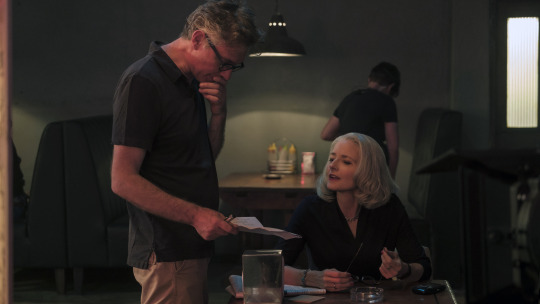
Director Kevin Macdonald on set with Jodie Foster.
How did you approach creating an honest representation of the graphic torture scenes, without putting the audience through it as well?
Whenever films about this period are [made] they’re always from the point of view of the Americans and this time we’re with Mohamedou. You can’t underestimate the fact that there have really been no mainstream American cinematic portrayals of Muslims at all, so in portraying a sympathetic Muslim character who’s also accused of terrorism, you’re pushing some hot buttons with people. It was important that those people who are uncomfortable with him understand why he confessed to what he confessed.
Everything you see in the film is what happened; the only difference is that they weren’t wearing masks of cats and Shrek-like creatures, they wore Star Wars masks of Yoda and Luke Skywalker in this very perverse fucked-up version of American pop culture. Obviously, we couldn’t get the rights to those. Actually, I don’t feel that it is graphic. There is more violence in your average Marvel movie. It’s psychologically disturbing because you’re experiencing this disorientating lighting, the [heavy-metal] music, and he’s being told his mother’s going to be raped and he’s flashing back to his childhood. To be empathizing with this character and then to see them to be so cruelly treated is so deeply disturbing.
How did you prepare Tahar Rahim for his convincing portrayal of such intense pain and suffering?
Tahar went through a great deal of discomfort in order to achieve it. He felt that to give a performance that had any chance of being truthful, he needed to experience a little bit of what Mohamedou had suffered, so throughout the movie he would insist on wearing real shackles which made his leg bleed and give him blisters. I would plead with him to put on rubber ones and he would say “no, I have to do this so I’m not just play-acting”.
He starved himself for about three weeks leading up to a torture sequence—he had lost an awful amount of weight and he was really unsteady on his legs. I was very worried about it and I got him nutritionists and doctors but he was determined to stick with that. You’ve got to understand that for a Muslim man like Tahar, this role has a much greater significance than it does for you or me. He felt a great weight of responsibility to do this correctly, not just for Mohamedou, but he was speaking for the whole Muslim world in a way.

Jodie Foster and Shailene Woodley as defense attorneys in ‘The Mauritanian’.
What compels you to study this period in time?
Mohamedou was released a couple of weeks before Trump came to power in 2016, so the story is still ongoing for him. He’s still being harassed by the American government and he’s not allowed to travel because he’s on these no-fly lists. I didn’t want to make a movie that was saying “George W. Bush is terrible”. We’ve been there, we’ve done that. This is looking back with a little bit of distance and saying “here’s the principles that we can learn from when you sidestep the rule of law”—what it takes to stand up like Lt. Stuart Couch did when everyone else around you is going along with something that’s really terrible.
You see that around Trump with the choices within the Republican Party to stand up and say they’re going to sacrifice their careers to do the right thing. It is a hard thing when there’s this mass hysteria in the air. The basic principles that the lawyer [characters] are representing is not about analyzing and replaying what happened after 9/11, they’re directly related in a bigger way to the world we all inhabit.
Did anything surprise you in how your subjects for Life in a Day 2020 addressed the pandemic?
One of the most affecting characters in the film is an American who lost his home and business because of the pandemic, so he’s living in his car. He seems very depressed when you meet him for the first time, then later he’s telling us there’s something that’s giving him joy in his life. He brings out all these drones with these cameras on them and puts on this VR headset and loses himself by flying through the trees. I thought that was such a great metaphor for the way that human ingenuity has enabled us to survive and thrive during the pandemic.
I get the feeling of resilience from [the film]. This is a more thoughtful film than the original one. I see this as a movie of [us] being beware of our susceptibility to disease and ultimately to death and mortality, [and] how we’ve found these consolations as human beings. To me, it’s a really profound thing. It also speaks to the main theme of the film which is how we’re all so similar, same as The Mauritanian. It’s confronting you with all these people and saying we fundamentally all share the basic things that underpin our lives and the differences between us are much less important than the things we have in common.
Let’s go from Life in a Day to your life in film. What’s a Scottish film that you love but you feel is very overlooked or underrated?
That’s really hard because there aren’t many Scottish films and there aren’t many good ones. Gregory’s Girl is the greatest Scottish film ever made—it’s the bible for life for me. That’s very well-known, so I would have to say Bill Forsyth’s previous film That Sinking Feeling, which was self-funded and made on 16mm black-and-white. It has some of the same actors and characters as Gregory’s Girl in it. Or my grandfather Emeric Pressberger’s film I Know Where I’m Going! which is a rare romantic comedy set in Scotland.

John Gordon Sinclair and Dee Hepburn in Bill Forsyth’s ‘Gregory’s Girl’ (1980).
Which film made you want to become a filmmaker?
I think it was Errol Morris’s The Thin Blue Line, which is one of the top five documentaries ever made and in my top ten desert-island movies.
What else is in your desert-island top ten?
Oh god, don’t! I knew you were going to ask me that. I’ll give a few. I would say there would have to be something by Preston Sturges—maybe The Lady Eve or The Palm Beach Story. There would have to be a film written by my grandfather, so probably The Life and Death of Colonel Blimp, which is the best British film ever made. There would have to be Singin’ in the Rain, which is the most purely joyful film I’ve ever seen. There would probably be The Battle of Algiers, which I rewatched recently and was an inspiration on The Mauritanian. Citizen Kane I also rewatched in anticipation of watching Mank, of which I was very disappointed. I thought it completely missed the point and was kind of boring.
Which was the best film released in 2020 for you?
I thought the Russian film Dear Comrades! was really stunning. It was made by a director [Andrei Konchalovsky] in his 80s who first worked with Andrei Tarkovsky back in the late 1950s. He co-scripted Ivan’s Childhood. I would love to make my masterpiece when I’m 86 too!
Related content
Films with Muslim characters
Movies that pass the Riz test
Scottish Cinema—a regularly updated list
Follow Jack on Letterboxd
‘The Mauritanian’ is in select US cinemas and virtual theaters now, and on SVOD from March 2. ‘Life in a Day 2020’ is available to stream free on YouTube, as is the original.
#kevin macdonald#michelangelo antonioni#scottish film#scottish director#emeric pressburger#the mauritanian#jodie foster#tahir rahim#tahar rahim#french actor#guantanamo bay#muslim representation#muslims on film#benedict cumberbatch#guantanamo diary#life in one day#life in one day 2020#life in one day film#letterboxd
8 notes
·
View notes
Text
Cranberry
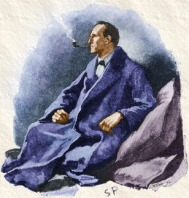
The ideal Holmes is tall and dark with sharp edges and an intelligent look to him, but also posh and with a sense that you could fold him into origami if you really tried. Dresses well, but wouldn’t look out of place sprawled dramatically over a couch in a dressing gown with a pipe and surrounded by drug paraphernalia. Once made a pillow fort and sat in it to think. Caught somewhere between handsome, pretty, and weird looking. Emphasis can be on any of the three. CANNOT have facial hair.
Holmes Adaptations
S-Tier

Miss Sherlock (Yuko Takeuchi) - 95%
You’ll notice, of course, that nowhere in the earlier description did I say Holmes needed to be white, a man, or even human. None of those qualifiers or the lack-thereof prevent someone from looking the part -- it simply becomes necessary to compare them to the characters around them. And when I picture a female Sherlock Holmes, Yuko Takeuchi embodies the exact image in my mind. Her sharp edges, piercing eyes, and impeccable fashion, along with the powerful weird energy she brings to the role, fit Sherlock perfectly. She does look more than a bit like she could kick my ass, but more in the manner she dominates the room, which is perfect for the character.
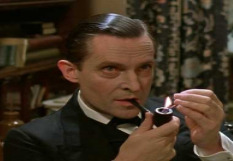
Sherlock Holmes (Jeremy Brett) - 85%
I haven’t watched this adaptation, though I’ve been meaning to get around to it. So this ranking is based solely on screenshots and promotional images. And honestly, as ugly as i find this guy, he totally nails it. He even kind of looks like the illustrations in the stories. I won’t give him a perfect score because his hair could be darker and his face is a little small, and there’s just barely something missing. But as far as “canon” Holmes adaptations go, he’s the cream of the crop.
A-Tier
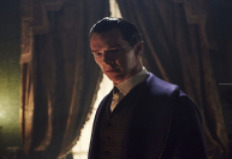
Sherlock: The Abominable Bride (Benedict Cumberbatch) - 80%
Definitely the more accurate of the two Cumberbatch Holmes designs, the sleek fashion and slicked back hair complement Cumberbatch’s angular build and “somewhere between pretty and just weird” face. He’s tall, dark, and posh. If there’s anything holding him back it’s simply that even dressed up properly, there’s something still a bit modern looking about him.
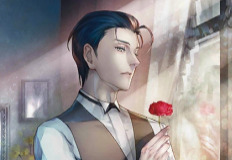
Fate/Grand Order - 78%
Given that his design and presentation are a direct reference to both Brett and Cumberbatch’s portrayals, it’s a given he’d place so highly. It’s really hard to nail down a 2D Holmes, especially in the anime style this game employs, since it has a tendency to prettify characters by default. True to form, FGO Holmes is far neater and more precise than I’d like. But he’s by no means a bad design, and depending on the image he can really hit the spot for me; he’s definitely a chart topper in the realm of 2D Holmes.
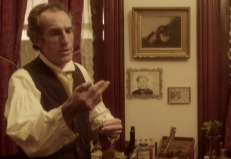
Sherlock Holmes: The Furtive Festivity (Gregory Johnstone) - 75%
There aren’t many Holmes that we only get to see as an old man, in no small part due to the ACD estate’s notoriously malicious copyright practices. Johnstone ranks so highly not due necessarily to the details of his look, but the overall feel he embodies. This Holmes is soft, affectionate, more than a little floppy. His hair and costume portray a man well grown into his eccentric life, and his face is sharp and mature enough to suggest the brains underneath; even if that’s more wisdom than intelligence in this particular story. This is a Holmes designed by someone who really loves Sherlock Holmes, and it definitely shows.
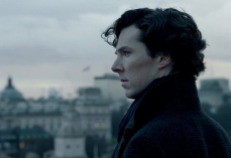
BBC Sherlock (Benedict Cumberbatch) - 75%
Cumberbatch’s features still naturally suit Holmes well, and he’s tall and striking enough to cover the rest. But this isn’t a rating of his acting performance aside from the visuals it supplies; it’s hard to modernize Holmes, especially since it makes perfect sense for Holmes to gel well with the changing times; he was always a man ahead of his era. BBC Holmes’s trademark trenchcoat and curly locks aren’t traditional Holmes, but they suit him well enough.
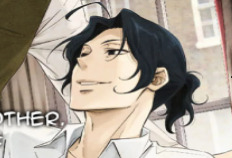
Yuukoku no Moriarty - 73%
The long hair is an unorthodox take, but I'm certainly not complaining. YnM's Holmes definitely nails the youthful scientific exuberance of an early Holmes. It's clear they were going for a sort of BBC/ACD mix, but with their own spin. Pretty -- he is an anime boy, after all -- but all sharp edges and full of energy. Decent, way better than most anime Holmes designs manage.
B-Tier
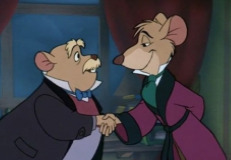
Basil of Baker Street [The Great Mouse Detective] - 70%
Comparing the character to those around them is especially important when it comes to non-human characters, who naturally don’t have the same features. Putting Basil next to Dawson makes this abundantly clear, as they make a perfect portrait of Holmes and Watson. For a mouse, he’s thin, angular, even a little ratlike; all decisions that suit Holmes well. I have some complaints about his ensemble, though; while the dressing gown suits him well, his normal brown coat and hat don’t work so well with his fur; the monochrome look makes him come off a bit scruffy and unrefined.
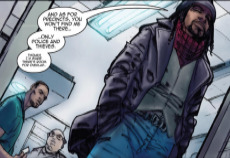
A Study in Black - 68%
Rules are made to be broken, they say; here’s a Holmes with well maintained facial hair and who’s shorter than Watson, and yet I can without question say they were the right decisions. This Holmes takes a very different design approach than any other on this list, even the other modern takes, but he embodies the spirit of Holmes much more than if he’d tried to match every detail. Holmes is still gaunt and striking, eccentric and fashionable. He looks absolutely great.
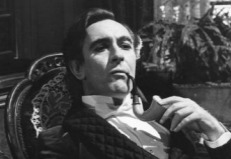
The Private Life of Sherlock Holmes (Robert Stephens) - 62%
Stephens in this role is, I have to say, far too soft. But he’s playing a different sort of Holmes, and I can’t resist keeping him here. There are some parts of the look he has down; he certainly looks high class, and the softer elements of Holmes’ character look good on him. Holmes’ traditional costume, the hat and coat, look out of place on him. But that suits the message of the film, and may very well have been intentional.
C-Tier
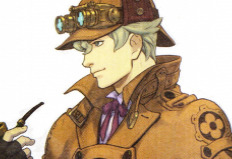
Dai Gyakuten Saiban - 58%
Not the only blond Holmes on this list, but it doesn’t suit him as poorly. From a character design standpoint, it looks very good. As a Holmes, it’s unorthodox. He’s not gonna be a chart topper with it, but I wouldn’t rule it out. This Holmes’ real problem isn’t his coloration, merely that he’s much too conventionally attractive. His jaw is a bit too wide, curls a bit too lovely, the peek of lavender under his coat a bit too rich, and I can’t look at him for too long without blushing. Do some cocaine and get back to me.
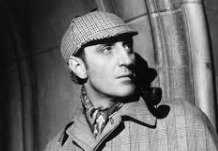
Sherlock Holmes (Basil Rathbone) - 55%
Now, this one might be controversial. I don’t think Rathbone Holmes looks very good. I can’t put my finger on why; his head is the right shape, his nose very sharp, though his face looks very smooth and he seems overall vaguely packed in. Like he was plucked out of the sky just before walking on set. The shapes are all right, it just seems off to me. I guess what I’m getting is that his look is too obviously produced. He looks too much like an actor portraying Holmes, rather than Holmes. But I know he’s gonna be the guy a lot of people swear by, so I won’t defend this placement too hard.
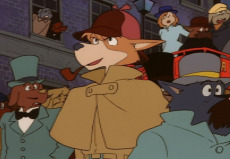
Sherlock Hound - 45%
Really, what is up with the monochrome design on some of these cartoons. Sherlock Hound has the darker hat to make up for it, though, so it’s a little better. Applying the same rubric as Basil to him... doesn’t get the same results. As far as I can tell, this just looks like a normal dog. And a scruffy light-furred one, at that. There’s a contrast between him and Watson, sure, but it could’ve been pushed further. At the end of the day this is an average guy dressed as Sherlock.
D-Tier

Herlock Sholmes [Code: Realize] - 40%
This is a very pretty anime boy. I’d pick him first in whatever dating sim this is. ...Wait, this is supposed to be Holmes? How can you tell? Look, I know it’s hard to make an anime boy Holmes. Holmes’ key design elements aren’t his costume or his hair, they’re the things that make him unpolished. And anime dating sim boys don’t like to be unpolished. But really, this is just a steampunk boy who likes tea. Nothing here reads as Holmes to me.

Sherlock Holmes (Robert Downey Jr.) - 35%
Now, I love this movie. RDJ got me back into Sherlock Holmes when I was younger. And as this character, he has a very specific and well designed look. ...Does that look gel with canon Holmes? I don’t think so. He’s rough, he’s scruffy, he’s short and wide and strong-jawed, and he refuses to go for a clean shave. I like him a lot, but he’s not very Holmesian. He does, however, nail the eccentricity and his costume design works for him well. I do like a messy Holmes. So I won’t go any lower than this.
F-Tier

Basil [Blush Blush] - 28%
So, he’s got the outfit. There’s that. But otherwise... This is just some soft ugly anime boy cosplaying Sherlock Holmes. He doesn’t have a single trait that works in his favor. On top of that, he’s got the same problem the other Basil on this list had -- the all monochrome light brown just looks weird, and not Holmesian at all. And this boy doesn’t have the excuse of literally being a mouse. This is just an ugly design.

Elementary (Jonny Lee Miller) - 25%
Now, I've only watched a few scattered episodes of Elementary. Partially because I'm morally opposed to shows that only gender-flip half of the duo, partially because I’m absolutely outraged by the travesty they made Moriarty. But this isn’t a bad character, per-se.
But, like, this is just some dude. This isn't Holmes.
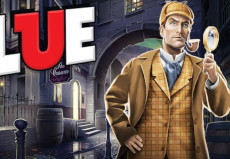
Sherlock Holmes [Clue] - 23%
I love Clue so much. That probably doesn’t surprise anyone. I have the season pass in this game, which automatically gives me every DLC character they add for free. So I was super excited to hear there was gonna be a Sherlock crossover. ...But this is just ugly. Another light haired square-jawed monochrome asshole pretending to be my favorite character. There’s nothing Holmes about this. (The rest of the designs in the pack are no better, but this isn’t about them.)
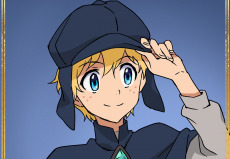
Skylar Holmes [Blossom Detective Holmes] - 20%
Now, Blossom Detective is a show that I famously disliked so much I immediately sat down and screenwrote my own Holmes cartoon on the spot. And Skylar certainly feels like she should be in the “part 2″ of this list, but a Holmes she is.
She's cute and she accessorizes well, but she's just not Sherlock Holmes by any stretch.

Sherlock Shellingford [Milky Holmes] - 10%
Now, look how cute she is! Sherlock Shellingford, present and accounted for. She’s got TWO Sherlock names so you know she’s the real deal. Now, this is just an objectively good design. She's exactly what she needs to be to serve the role she plays!
And that isn't Sherlock Holmes. Sorry.
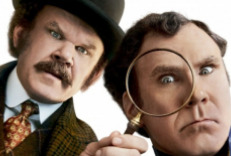
Holmes & Watson (Will Ferrell) - 0%
Get out of my house.
Holmes Archetypes
Not all Holmes’ are meant to be the Canonical Sherlock Holmes, of course; some are just neat references, or characters who naturally fit into his role whether the author intended it or not. Let’s address them here, and remember that not looking the part doesn’t really reflect negatively on these ones as they’re stand-alone.
S-Tier

Dylan Reinhart [Instinct] (Alan Cumming) - 90%
Dylan is so point for point Sherlock Holmes that it’s hard to call him an archetype and not a straight adaptation, or possibly a rip-off if I’m being harsh. But I’m not supposed to be rating him by portrayal, just looks - and he’s really good. He’s the exact right blend of weird looking, though not as angular as he should be. His sharp eyebrows and nose and high hairline work fantastic, and he wears a suit very well. He’s a perfect little bundle of posh and nerves, and though he’s not perfect the fact that this isn’t actually supposed to be canon Sherlock Holmes makes this placement very unsurprising. He wouldn’t look out of place on the other list.
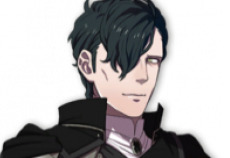
Hubert von Vestra [Fire Emblem: Three Houses] - 85%
Oh? What’s that? You don’t think Hubert von Vestra is a Sherlock Holmes archetype? Okay, then explain to me why he uses the word “sentiment” exactly twice in his supports. Atheists 1, Church of Seiros 0. Anyway. Let’s start with the obvious. Hubert looks like Benedict Cumberbatch. But, he looks like a vampire Benedict Cumberbatch who did a lot more cocaine. And if you don’t think Sherlock Holmes should look like a vampire, youre lying.
A-Tier
None yet. Please submit your Holmes and I will add them.
B-Tier

Heinwald [Dragalia Lost] - 67%
I would never look at this design and think "well, that's Sherlock Holmes". Heinwald looks more like a zombie or the bride of Frankenstein, very Halloween. His look being so specific does come at the expense of his Holmesness, but he's still got more than a few traits down and he’s an absolute treat.

L Lawliet [Death Note] - 65%
This is a very, very weird looking man. Key points: dark hair and eyes. gaunt, sharp, and mostly angular (though with a softer face). Extremely foldable. This man could 100% pass for Holmes, if someone else was dressing him. Put him in a suit, comb his hair? Yeah. It’d really work. But until then, he’s just most of the way there.
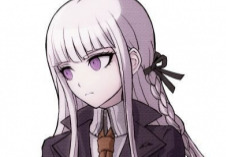
Kyoko Kirigiri [Danganronpa] - 63%
Kirigiri really gets jilted here, because she could be much higher. Unfortunately, she has to be part of a series that with only a few exceptions just reuses the same face and body for most of its female characters. Kirigiri definitely has the sharp and focused feel she needs to pass for Holmes, and she dresses well. The white hair is the opposite of the dark he usually touts, but it’s striking. Unfortunately, put her next to any other character in her series, and she blends back in.

Miles Edgeworth [Ace Attorney] - 60%
Feels a little weird to put Edgeworth on here when the actual Sherlock Holmes is in his game, but he fits the character much better if not the narrative role. So let’s go over the looks. His jaw is a bit wide, but he’s very pointy, and I certainly have never gotten the impression he’s a physically strong man. He’s very fashionable, and with his big cravat and sharp hair he makes a cutting silhouette. I’d say he needs a bit more to really nail the look, though.
C-Tier
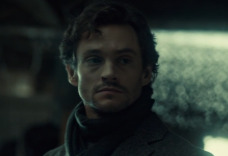
Will Graham [Hannibal] (Hugh Dancy) - 45%
Despite being a noted Hannibal Lecter fan and possible homosexual, I still haven’t watched Hannibal. I’m taking people at their word that Will is a Sherlock; I definitely would have assumed otherwise looking at him. He reminds me deeply of BBC’s John Watson, and it’s hard to see anything else. But I don’t hate his look; he reads as clever, he looks good in darks, and I wouldn’t complain to see him cast as Holmes. He’s better than some of the lower-tiered canon Holmes actors, anyway.
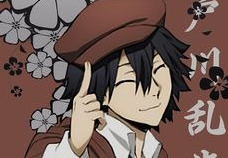
Ranpo Edogawa [Bungo Stray Dogs] - 40%
This is another submission, and I don’t know who this boy is. I really doubt he’s actually a Holmes, given that he’s named after a real non-Doyle writer, but I was begged to include him. Let’s go. I really like his outfit. He’s got an aesthetic I like. Is it Holmes’? No. This kid looks like he’d fit way better as a Baker Street Irregular; maybe he should audition.
D-Tier
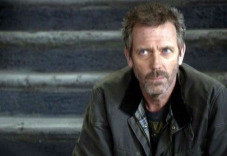
Gregory House (Hugh Laurie) - 35%
Take everything I said for Robert Downey Jr, and just mess up his hair a bit more. House is scruffy, poorly put together, and not wearing anything that costs over $100. As a Holmes, he’d work as one of his disguises; I wouldn’t be super surprised if this guy suddenly cleaned up and looked the part -- but it would take a lot of cleaning. I love his look, though -- again, he isn’t trying to be canon. House is an explicit Holmes parallel, but he’s still his own character.
F-Tier

Walnut Cookie [Cookie Run] - 20%
Given how much “Holmes costume” and “Detective costume” are conflated, it’s possible this gingerbread baby isn’t even supposed to be a Holmes reference, but I’ll take her. She’s an excellent design - but a standalone one. Shes too soft, warm, and curly looking to pull off canon Holmes.
5 notes
·
View notes
Photo
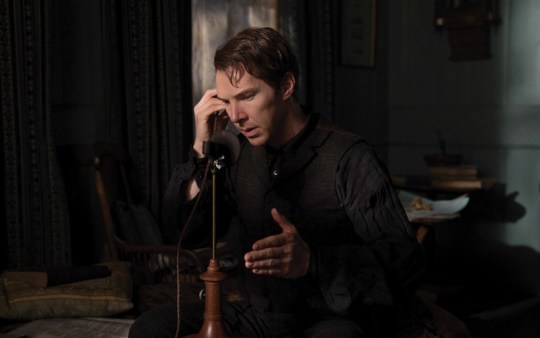
Benedict Cumberbatch on Playing Thomas Edison in “The Current War”
(source) photos: Dean Rogers
Competition breeds innovation. History is full of rivals who, by working against one another, continuously pushing to be better, have inadvertently contributed to the greater good. Apple versus Microsoft is one such example, paving the way for computing as we know it today. There’s Elon Musk’s SpaceX versus Jeff Bezos’ Blue Origin – the modern day space race. However, few rivalries have changed the world as much as the War of Currents. It was a battle of entrepreneurial titans, of AC versus DC, of George Westinghouse versus Thomas Edison. Now, Benedict Cumberbatch and Michael Shannon are bringing the story to the big screen.
Now, with The Current War, the story of this famous rivalry is coming to the big screen. The Sorcerer Supreme himself, Benedict Cumberbatch, explores the very real kind of magic in Thomas Edison’s use of electricity, while the versatile Michael Shannon plays successful businessman and entrepreneur George Westinghouse. Slated to release on October 25, 2019, The Current War explores this famous rivalry of the two titans of electricity. We had the opportunity to discuss with Cumberbatch the various aspects of his character and this historic conflict.
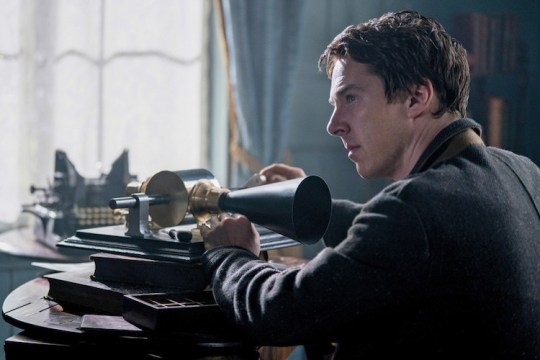
Innovation & Tech Today: What did you do to prepare to play the man who’s been called “America’s Greatest Inventor?”
Benedict Cumberbatch: Well, I read much as I could… There was an excerpt of his diary, which is a little known publication (I think out of print now) that production managed to get a hold of for me. That was a wonderful insight…
I researched into specifics to do with his deafness, to do with the electric current and its distribution. I was speaking to people who know a lot more about these things, including our art department on the film itself in pre-production, who were pretty fantastic. I always find that leaning on some of the experts around you is an incredibly helpful thing to do. Then the book itself that it’s inspired by, [War of the Currents]. It’s an amazing story of three men, three titans of invention.
I&T Today: Did you learn anything about him that the average person might not know?
Benedict Cumberbatch: I guess the regrets or the understanding of what he’d sacrificed with his family, how hard he worked and what cost that had on the intimacy that he had, and lacked, with his family. Not to judge the man, but I think he ended up repeating his mistakes, if they were mistakes. Or is it just his nature? But I think it still tortured him as well as being something he decided to do. That work always came first. That was an interesting thing to explore… He was very fond of coffee. He’d often sleep in the laboratory and work through the night.
He was very fond of his men, he treated them honestly and truthfully and, at times, harshly, but there was a lot of celebratory machismo and backslapping, and it was a proper communal work environment in Menlo Park. That’s the first blueprint for the research and development departments we now have in a lot of industries in the Silicon Valley. There was a lot of comradery and I think there were certain pressure points in this race for the control of the current where he probably didn’t behave at his best. There’s a human element to that. It’s not all just good natured thigh slapping. There was a lot of hard work and a lot of spilled milk.
How ferocious a reader he was, I didn’t know. I don’t know how general knowledge that is about him, but it’s gobsmacking. I mean volumes of literature all the time. He never stopped reading. A lot of the diaries, accounts of passages, fiction, as well as a lot of history, and of course science and nonfiction actual works. He’s extraordinary. He writes about books as mood enhancers as well, how they transport him. He writes about his daydreams and his dreams, and however racy they get. He touches upon a fantasy life as well. He’s just very funny, and takes great delight in the brilliance of other people as well.
I&T Today: The Current War is revolved around this rivalry, specifically between Edison and George Westinghouse, played by Michael Shannon. How has it been working with Shannon as your rival, as your opposite?
Benedict Cumberbatch: Well, it’s a bit like the famous scene in Heat where the two rivals operate in such isolated opposition or polarity that they really are arguing two completely different cases. They don’t crossover much, that’s the great thing. Sadly, I only got two instances where Michael and I were on the same set, but obviously one of those is a big scene, a lot like the café scene that’s between De Niro and Pacino.
Michael is an extraordinary actor. I’ve been a huge fan of all of his work, and for a long time. He has such command of characterization, of how to achieve so much with seemingly so little, but inside he’s fearlessly intelligent and very heartfelt.
I&T Today: Edison isn’t the first scientist you’ve played. You’ve also portrayed Alan Turing in The Imitation Game and others. How has this experience compared to that of Alan Turing?
Benedict Cumberbatch: I think Edison obviously has an eccentricity: the workaholic nature, the excessive nature, the competitiveness, and what were rumored to be issues of hygiene because of that. I still think that he operated on a very different plane from the other scientists I’ve portrayed, and Turing in particular. Personality-wise, he’s bombastic, he’s a salesman, he’s confident up front. He’d be as confident in front of a podium as he would be in his workshop. Entertaining and regaling with facts and amusing anecdotes and funny asides. You know he was a very public persona.
Whereas Alan Turing was a very awkward, retiring, quiet, and shy man by comparison. Often, people say “you play lots of scientists.” Yes, but I also play lots of different human beings, and they couldn’t be two more different human beings in my opinion.
Alan was lean and trim, a very competent long-distance runner. And I think Edison would not be a competent long distance runner. He was energetic, but I don’t think it went too far in the direction of cardiovascular workouts.
And the lure for this wasn’t just another scientist, but it was another extraordinary human being. It was tempting, had some aspects that I had never played before. I always try to look for work that gives me something new to think about.
I&T Today: How has playing Edison compared to some of the fictional intellectuals you’ve played? Like Sherlock Holmes or Dr. Strange?
Benedict Cumberbatch: The Wizard of Menlo Park and the Sorcerer Supreme. I think what’s extraordinary about what Edison did was this was magic we’re still living with. I’ve got two, very young, children. And to see the look in their eyes when lights go on and off for the first time, and they really take that in. It’s a very bold and frank reminder of what an extraordinary thing it is. Doing this Promethean thing of lighting unlight with light, and creating daylight, and interrupting circadian rhythms, and bringing convenience to every part of our lives so we can evolve physically and intellectually, in a different way. These are incredibly real things, and to be part of storytelling or a storyteller trying to imagine and envision what that would be like to be at the forefront of that invention is terribly exciting.
I&T Today: As you studied this historic rivalry, do you think there are comparisons to some more modern rivalries? Bill Gates vs. Steve Jobs, for instance?
Benedict Cumberbatch: Of course there are. How can there not be? I think there have been rivalries in all areas in industry. Of course now, a lot of these powerhouses in Silicon Valley, these men, captains of our modern tech industry, Noskin and Jeff Bergin, Gates and Steve Jobs. You know they’ve become as iconic as their products in many ways. And rightfully so. And I think the men and women who are captaining those areas of industry now always acknowledge their debt to people like Westinghouse, Edison, and of course, Tesla.
#benedict cumberbatch#the current war:directors cut#hard working actor works hard#i love his interviews - he prepares so diligently#for all his parts - no wonder he's so well respected for his craft
39 notes
·
View notes
Text
Hamilton and 10 Other Ways to Watch the American Revolution
https://ift.tt/eA8V8J
Hamilton will debut on Disney+ on July 3rd, the start of a long holiday weekend. The Walt Disney Company paid good money for the Broadway phenomenon, a reported $75 million for the rights to the film, which features performances by the original cast (we wrote a primer on the cast and where they are now).
If you’re healthily avoiding crowds and already had your fill of fireworks, here are 10 more movies and TV shows that explore the American Revolution from different angles.
1776 (1972)
Making the Founding Fathers sing was truly revolutionary when Sherman Edwards’s musical debuted on Broadway in 1969. The plot traced how the Second Continental Congress decided on independence; there are lots of fun character moments but really no other story. After the show won the Tony for Best Musical, Hollywood mogul Jack Warner hired most of the cast and director Peter Hunt to make a movie. Then Warner cut a big production number (now restored) to please President Nixon. This is John Adams’s view of history, so he’s the hero and John Dickinson the antagonist—but Dickinson still comes off better than eminent jurist James Wilson. Recognizing 1776 as an inspiration, Lin-Manuel Miranda gave the song “Sit Down, John!” a shout-out in Hamilton.
More of This: For rollicking fun in the 1700s, everybody should see Tom Jones, the 1963 film by Tony Richardson that made Albert Finney a global star.
April Morning (1988) and The Crossing (1999)
Howard Fast, proud leftist author of Spartacus, published April Morning as a novel about the Battle of Lexington and Concord and The Crossing as a nonfiction account of the Battle of Trenton. Now we recognize both as historical fiction. Fast’s robust stories were adapted into television movies with stellar leads: Tommy Lee Jones played a Lexington farmer guiding his teen-aged son in 1988, and Jeff Daniels portrayed Gen. George Washington trying to get across the Delaware in 2000.
More of This: In 1984 and 1986, CBS dramatized the life of George Washington over 10 hours. Barry Bostwick played George and Patty Duke Astin played Martha, so they got the height differential right.
The Book of Negroes
At the end of the Revolutionary War in 1783, British authorities evacuated thousands of Loyalists of African descent to Canada. The names of free black refugees were recorded in a document labeled “The Book of Negroes,” and Canadian novelist Lawrence Hill borrowed that title. (In the U.S., his book was retitled Someone Knows My Name.) In 2015 Hill turned his award-winning novel into a six-episode miniseries with writer-director Clement Virgo. This globe-spanning story follows a woman kidnapped in Niger, enslaved in South Carolina, and evacuated to Nova Scotia; she then returns to Africa to help found Sierra Leone. The Book of Negroes thus explores personal and political liberty, war, and nation-building—but not confined to the U.S.
More of This: The 1990 biopic Divided Loyalties profiles Joseph Brant, leader of Britain’s Mohawk allies during the Revolutionary War. Why do we see such side-eye on the American Revolution from Canada? Oh, yeah…
The Devil’s Disciple
It’s always fun to watch Burt Lancaster and Kirk Douglas work together, enjoying each other’s company and trying to steal scenes. How about adding Laurence Olivier to the mix as real-life British general and playwright John Burgoyne? All in a 1959 adaptation of George Bernard Shaw’s first successful play, set in upstate New York during the crucial 1777 campaign. You might think the battle scenes acted out by wooden dolls are the most unrealistic part of this film, but wait till Lancaster blows up a room full of redcoats and stays on his feet. Because he’s Burt Lancaster, dammit!
More of This: To be frank, John Ford’s 1939 adaptation of Drums Along the Mohawk with Claudette Colbert and Henry Fonda is a better Hollywood movie set in upstate New York during the Revolution, but a more conventional one.
John Adams
HBO’s seven-hour miniseries from 2008 remains the gold standard for Revolutionary drama because of the terrific acting by Paul Giamatti as John Adams and Laura Linney as Abigail Adams. The screenplay throws John into the center of events even more than his own autobiography did, and historical shortcuts often shortchange the facts. But the smart, cantankerous, high-minded spirit of the Adamses shines through.
More of This: Back in 1976, PBS covered the same ground in its thirteen-episode series The Adams Chronicles, which continued into the next two generations. Compare and contrast.
Liberty’s Kids
PBS, DIC Entertainment, and a slew of celebrity voices taught Gen. Z about America’s Revolution in this 40-episode animated cartoon. Three years before Avatar: The Last Airbender debuted, this series showed a bunch of teens navigating a world at war. The young heroes managed to go almost everywhere the action was, and also not to age much between 1773 and 1789.
More of This: For another animated take, seek out Disney’s 1953 short “Ben and Me.” To see teens caught up in the start of the Revolution, Disney also offers Johnny Tremain from 1957. Even better, read the novels by Robert Lawson and Esther Forbes.
Mary Silliman’s War
This is undoubtedly the most historically accurate film about life during the Revolutionary War. Mary Silliman was a housewife in Fairfield, Connecticut. Her husband was a militia officer imprisoned by the British, and she pursued his release while managing their farm and evading a Royal Navy attack. Educated and pious, Silliman kept a journal, which Joy Day Buel and Richard Buel, Jr., studied to write The Way of Duty. That biography was the basis of this independent drama from 1994 directed by Stephen Surjik, whose more recent work includes episodes of Daredevil and The Umbrella Academy.
More of This: The 1997 documentary A Midwife’s Tale dramatizes crucial moments in the life of midwife Martha Ballard while focusing on how historian Laurel Thatcher Ulrich recreated that life from the bare bones of Ballard’s post-Revolutionary diary.
Revolution
After making the so-very-British Chariots of Fire, very-British Hugh Hudson turned in 1985 to the American War for Independence. And he cast not-at-all-British Al Pacino and Nastassja Kinski as British colonists caught up in the fighting, plus Canadian Donald Sutherland as a sadistic British sergeant. The result was widely derided as an epic mess, but there are some powerful visual sequences. Hudson later made a director’s cut that’s unusual in being 10 minutes shorter than the original version, as well as more coherent.
More of This: The next time Hollywood tried a Revolutionary War epic with a foreign-born director, Roland Emmerich delivered The Patriot, starring Mel Gibson. Such an invincible hero, such cartoonish villains, such whitewashing of the period’s sticky issues—it made Revolution look better.
Sweet Liberty
This 1986 comedy by Alan Alda hinged on the making of a movie about the 1781 Battle of Cowpens. Alda played a local professor and reenactor trying to stand up for historical accuracy. Michele Pfeiffer and Michael Caine were over-the-top actors come to South Carolina to star in the movie within the movie, and Saul Rubinek and Bob Hoskins played the crass filmmakers. It’s a mild satire of Hollywood clashing with genuine folk, but dedicated eighteenth-century reenactors who trained the troops in The Patriot say this film is the most accurate reflection of their experience.
More of This: For real drama behind Revolutionary reenactments, check out Nyier Abdou and Adya Beasley’s 39-minute documentary Being George on YouTube.
Turn: Washington’s Spies
From 2014 to 2017, this 40-episode AMC series told a highly fictionalized account of the Culper Spy Ring that operated on Long Island, slipping information from British-occupied New York to the American command. Later seasons covered Benedict Arnold’s betrayal and carried through to Yorktown. Though most of the main characters were inspired by real people, only Ian Kahn’s portrayal of George Washington felt deeply rooted in history. But adherence to the documentary record wasn’t the point of Turn—melodrama was, and the plot twists and romantic entanglements are many.
More of This: For more eighteenth-century melodrama, check out the 2013 filming of Moonfleet on Amazon. (But beware: The website offers cast info about Fritz Lang’s 1955 version instead.)
The post Hamilton and 10 Other Ways to Watch the American Revolution appeared first on Den of Geek.
from Den of Geek https://ift.tt/38rGftS
6 notes
·
View notes
Text
Psycho Analysis: The Grinch

(WARNING! This analysis contains SPOILERS!)
What can be said about the Grinch that hasn’t already been said a million times by a million different people? The Grinch is easily one of the most iconic Christmas characters of all time, up there with the likes of Scrooge, and he even has a similar character arc in which he learns the true meaning of Christmas and becomes a better person. The original Chuck Jones animated short has gone down as one of the most beloved Christmas specials of all time as well as one of the best Dr. Seuss adaptations ever (if not THE best), and it gave the Grinch his iconic theme song which every other adaptation has seen fit to use.
The Jim Carrey live action take and the Illumination version which featured Benedict Cumberbatch in the title role both tried to bring a fresh take to the world’s most beloved classic Christmas curmudgeon, but did they succeed in making him entertaining and engaging as a villain is the real question?
Actor: In the original Chuck Jones short, none other than Frankenstein’s monster himself, Boris Karloff, portrayed the Grinch, but this is mostly due to the fact he was the narrator of the story and the Grinch is the only character who really speaks due to the tale being mostly shown from his POV. Still, let’s not pretend like Karloff isn’t the definitive voice here, especially considering his competition.
Carrey and Cumberbatch are both good actors, don’t get me wrong, but I don’t think they really do the Grinch all too much justice. Carrey, bless his heart, at least comes fairly close, with his Grinch being in line with the original, but at the same time this is a comedic Carrey character coming off of his 90s run as a wacky comic actor. Carrey injects that manic Carrey energy into the performance, and while I think it’s a good performance, I don’t necessarily find it to be a good Grinch,
Cumberbatch faces a similar issue, not helped by his decision to use a weird American accent as opposed to his natural British one, leaving his Grinch sounding like a nasally dork. Again, he doesn’t do a terrible job by any means, but his performance certainly does nothing to convince you the Grinch is a mean, rotten soul.
Motivation/Goals: The Chuck Jones Grinch sticks to the original book to a fault; the Grinch is just a cranky jerk who hates Christmas for some inexplicable reason, and so decides to ruin it for everyone out of petty spite. Yes, it lacks any sort of depth, but the Grinch is a character from a children’s book and he just puts so much darn effort into his plan that it’s really easy to forget he’s just doing this because he is just a miserable bastard.
The two other attempts at the Grinch have gone a long way to giving him some sort of tragic backstory explaining his hatred for Christmas. And… I actually really like that. Yes, yes, villains can just do villainous things because they’re jerks, but I do appreciate the other adaptations attempting to do something interesting with the character and make him a bit more engaging in a feature-length product. In the Jim Carrey film, the Grinch becomes bitter and evil due to a childhood of constant bullying, while the Benedict Cumberbatch Grinch was a lonely orphan who never got to celebrate Christmas. While obviously it’s up to the viewer to decide whether or not these backstories add any sort of interesting element to the Grinch’s hatred of Chrtistmas, it’s hard to deny that it makes a bit more sense than the Grinch suddenly and randomly deciding after half a century that this Christmas was going to be the last ever.
Personality: While this section of Psycho Analysis is going to be semi-retired, the three Grinches are actually a perfect example of where examining the personalities of the characters can actually show a lot about the overall quality. Obviously, the original Grinch is exactly what a Grinch should be, at least in my eyes: a bitter, miserable curmudgeon who takes great joy in bringing misery to others with his selfish, senseless acts of holiday thievery. He’s a mean one, Mr. Grinch.
The Carrey Grinch does still have these elements, but it’s a bit outshone by Carrey’s hammy performance. His Grinch is about as wild as Ace Ventura or the Riddler, and while hammy villains are always fun – and there’s no denying the Grinch is – it makes it a lot easier to see him eventually turning to the light side, especially since he’s actually shown to have some redeeming qualities.
These issues are continued into Cumberbatch’s Grinch, and in fact here the problems peak. Cumberbatch’s Grinch from the start comes off as more as mildly irritated jerk, yet one who really doesn’t seem evil at all, and as the story continues he seems far more like a depressed, unhappy man with undiagnosed mental illness who is suffering due to childhood trauma. You don’t want to say this guy has termites in his smile or that he’s slippery as an eel or that you wouldn’t touch him with a thirty-nine and a half foot pole; you just want to give him a hug and tell him that things are going to get better. He just seems like he needs a friend, not a total life-changing epiphany.
Final Fate: We all know how it goes; his heart grows three sizes and he learns the true meaning of Christmas. Each of the adaptations keeps this in, though obviously to diminishing returns as each successive adaptation has made the Grinch nicer from the get-go in some regard due to the tragic backstories and whatnot.
Best Scene: At least for the original, his best moment is, of course, the montage during “You’re a Mean One Mr. Grinch,” in which we get to see all of the slippery ways this green meanie is ruining the holidays. Of course, this is matched by the epic moment at the end where the Grinch gains super strength from his heart growing three sizes and lifts the sleigh of stolen goods, which is equally awesome whether it’s te animated one or Jim Carrey doing it.
Cumberbatch’s Grinch manages to have a different moment to call his best: after he has redeemed himself, he gets invited to dinner in Whoville, and the scene where he nervously goes to the house and makes small talk is just very sweet and endearing. It’s easily the best scene in the movie and shows that even watered down there’s still plenty of heart to be mined from this timeless tale.
Final Thoughts & Score: I think that the fact that the Grinch is constantly being reimagined is a sign at how impressive and enduring he is as a character, and he’s easily the greatest Christmas villain of all time (with apologies to Hans Gruber, Mr. Potter, Burgermeister Meisterburger, and Kirk Cameron). The original special is obviously the definitive portrayal of the character, to the point where the Grinch became a household name and got himself two more specials, one in which he once again terrorized Whoville (this time with a wagon filled with nightmarish hallucinations) and one where he faced off against the Cat in the Hat, the latter being especially notable for beating Zack Snyder to the punch at making “Crossover Versus Movie in Which One of the Title Characters Is Redeemed By Mentioning His Mother” by 34 years.
The original Grinch even effected himself; his iconic green, almost goblin-like appearance was a departure from the book, where he sort of resembled a more mischievous Who, and it has ended up sticking for the character ever since. Throw in that iconic villain song about how foul he is sang by Thurl Ravenscroft AKA Tony the Tiger, as well as the fact that “Grinch” is up there with “Scrooge” as shorthand for someone who hates Christmas, and it’s easy to justify letting the Chuck Jones take on the Grinch steal not only Christmas, but an 11/10.
Carrey’s take on the character is different, but not bad. I’m not going to say it’s good either, though; I still think Carrey hammed it up too much and just let loose his manic energy. And it’s really weird, because I have a soft spot for the film and I love the performance, and I think the insane energy of Carrey’s performance is what elevates the film and has helped it become a sort of holiday cult classic, but I think that it kind of misses the point of how the Grinch should be. It really boils down to the usual thing with these adaptations that try and add complexities to characters that just work better when they are simple: Jim Carrey’s Grinch is a great, fun character, but he just isn’t a great Grinch. Still, the makeup and costuming is so amazing that I’d feel like a Grinch myself if I stole too many points, so I think a 6/10 is a solid score for a performance that manages to be a bit above your average villain.
And then we get to Cumberbatch. I’m just going to say it: I barely consider his Grinch a villain. He’s just too nice and sad and cranky to really be evil. Sure he has wacky inventions, sure he is a bit passive aggressive to the Whos, but god this guy is just not mean enough. The fact he can just walk into town and interact with the townsfolk and they don’t even bat an eye says a lot about how watered down and toothless this take on the character is. Not helping is the safe, soft design Illumination gave him, as well as Cumberbatch’s weird American accent. Still, I don’t think this Grinch deserves worse than a 4/10 when it comes right down to it. In this case, it’s more that what’s interesting about him as a character saves him from sinking any lower than just being subpar as opposed to the problem with Carrey being that what made him interesting as a character made him less appealing as a Grinch. This guy does still try and steal Christmas, after all… It’s just that he’s so nice to begin with that you really aren’t too shocked when he does end up turning over a new leaf.
While it’s obvious the Grinch has had his ups and downs over the years, the fact he is such a legendary figure and an enduring cultural icon really says a lot for his staying power, as well as that sometimes a simple villain that lacks any complex motivation beyond “he’s a jerk” can really resonate with people. Maybe all of these other adaptations don’t quite measure up to the original animated special, but they don’t need to; it’s just interesting to see what different visions for the Grinch look like from different creators. Whether it’s good or bad, one thing is for sure: he’s a mean one, that Mr. Grinch, and we all love him for it.
You know what we don’t love him for, though? His dental hygiene.

Merry Christmas!
#Psycho Analysis#The Grinch#how the grinch stole christmas#Dr. Seuss#Chuck Jones#Boris Karloff#Jim Carrey#Benedict Cumberbatch
16 notes
·
View notes
Text
Movie Review: The Current War

Imagine a History Channel special, or perhaps one of those educational classroom videos but with A-list actors, and you’ve pretty much got a hold on The Current War. Too much of the already-slim hour-and-forty-minute runtime is spent on visual razzle-dazzle to really get at the heart of the story, while the portrayal of the people involved is largely surface (and mostly fictional). The battle over who got to power America is one of the most compelling stories in this country’s history, absolutely begging for a great movie, but this isn’t it.
As a massive nerd of both the normal and historical variety, I almost can’t imagine there’s anyone who doesn’t know the basics of the Edison-Westinghouse feud; it’s such a cornerstone of the geek world that I expect Disney to buy the rights any day now. Thomas Edison, who refined (but did not invent) the light bulb, got into a tiff with George Westinghouse, whose name you might see if you look at your grandparents’ old appliances. At issue was whose electric current could better power the nation. AC and DC don’t just form the name of a band you hear at sporting events---they represent two distinct ways to provide people with electricity, and at the turn of the 20th century they formed the basis of a true battle of the titans, waged in front of the press and in public demonstrations. Direct current, argued Edison, was safer and more reliable; Westinghouse argued the same for the alternating current system. The details of differences between the two are the stuff of science textbooks rather than film reviews; as in love as I am with the story, I’m no engineer.
This fight is often depicted as a battle between the greedy, careless Edison and the more egalitarian, noble-minded Westinghouse. The Current War opts to depict both as complex men with many scars and ghosts, each of whom really and truly believe their system is the safest and best. Edison (Benedict Cumberbatch) is obsessive to the point of rudeness. Other than his wife Mary (Tuppence Middleton), his two children and his bluntly honest-but-loyal assistant Samuel Insull (Tom Holland), he has little use for other humans, other than as tools used to fulfill his visions. This extends to himself: his own welfare can absolutely be sacrificed for the advancement of his genius. Cumberbatch essentially imports his Sherlock Holmes wholesale, giving us an Edison who seems barely aware of the world outside his laboratory, though with a touch more ambition: he is willing to lie to the press and to the courts to win a fight, and unlike Holmes is certainly aware of his own fame and legacy. His employee and later rival under Westinghouse, Nikola Tesla (Nicholas Hoult) is not fleshed out in any detail, but then, he isn’t the focus.

Westinghouse (Michael Shannon) is portrayed, by comparison, as interested only in the good of the country, and willing to burn money to see his vision of energy realized. He’s a less compelling character, at least in this movie, than Edison, who seems to have absorbed most of writer Michael Mitnick and director Alfonso Gomez-Reion’s attention. His wife, played by Katherine Waterston, is also curiously underutilized considering who was cast in the role. Shannon’s portrayal is even-handed at all times, and his most compelling moment is a flashback in which he gets himself out of a Civil War-era jam with clever trickery and a knowledge of mechanics.
Yet that sequence falls prey to the movie’s central issue: an over-reliance on editing gimmicks. It is dribbled in in three or four minute-long chunks over the movie, when it would have had more impact if it were presented succinctly, in a single scene. Throughout the film, Gomez-Rejon seems intent on visually emphasizing the wonder of the age of electricity, rather than fleshing out the people behind it. At times, the film even takes a short break from the narrative to show us montages of things lit up by the new power source, or even more oddly still, seemingly unrelated bits of film footage---something shown to us long before Edison begins talking about the movie camera, so that their inclusion is jarring. These asides sometimes extend to the people themselves, who regularly break the first rule of a great historical drama: they know they are living in the past. Both Edison and Westinghouse regularly say things aimed squarely at audiences in 2019---things that, as forward-thinking as both men could be, they would not have actually said, because they were not seers. The movie even wraps with a word from Hoult’s Tesla where he seems to be speaking directly to us, like one of the animatronic Presidents at Disney World. The filmmakers seem to think that we won’t understand the import of what is happening unless someone speaks it out loud.
Mitnick, who reportedly finalized the screenplay over sixty drafts and ten years, has a script that shines when it focuses on Edison and Insull, and the sometimes heated interplay between the two. Yet with only an hour and 41 minutes to work with, the movie zeroes in on costumes and gee whiz shots of technology’s power instead of spending the time necessary to really let us into this fascinating era…and that’s after executive producer Martin Scorsese’s pull allowed Gomez-Reion to cut time from the original version, which seems strange to my eyes. This story needed more time, not less. It would have been suitable to the big, nearly-three-hour historical epics Hollywood used to be able to make, before endless cycles of franchises wore away audience attention spans. The treatment it has gotten is full of data and has one excellent performance in Cumberbatch, yet ultimately ends up devoid of illumination.
Verdict: Average
Note: I don’t use stars, but here are my possible verdicts.
Must-See
Highly Recommended
Recommended
Average
Not Recommended
Avoid like the Plague
You can follow Ryan's reviews on Facebook here:
https://www.facebook.com/ryanmeftmovies/
Or his tweets here:
https://twitter.com/RyanmEft
All images are property of the people what own the movie.
#benedict cumberbatch#tom holland#michael shannon#nikola tesla#thomas edison#george westinghouse#nicholas hoult#the current war#Martin Scorsese#michael mitnick#alfonso gomez-rejon
20 notes
·
View notes
Text
Pirate Theatre is Makin' It This Weekend
By Ricky and Dana Young-Howze
Cedar Creek High School
Egg Harbor City
The students greatly surpassed my expectations at Cedar Creek High School's production of Makin' It. This play by Cynthia Mercati was directed by John T. Stephan and brought a host of veteran and green actors together to do this show.

There is more than meets the eye in any high school hallway. This play shows that in any clique, any student, any teacher, there something beneath the surface desperately trying to get out.
Direction by John T Stephan was strong last night. You could tell he really wanted a show that gave a lot of new performers a chance to shine while being supported by a core group of his stage veterans. What I always love about Stephan is that he seeks to build young artists up and develop their talent and not just to put on a great show to sell tickets.
But I did feel that even his fledgling actors were stronger than the script he was working with. There were several parts of the script that I saw him valiantly try to create workarounds for.
For example: the script stops all dramatic action to make actors walk downstage and then bare their souls under blue light in monologue. I feel it’s a problem that only exists in the show because the script says it must happen. In fact this got so formulaic that Dana and I could guess to within a second when another monologue was coming. We would have loved it much better if there were no monologues and the story could keep moving forward.
But here was my ultimate problem with them: the monologues where where I saw Stephan shine! This is a man whose directing style I know the most and these intimate moments were where I could see him dive into character work and coax some solid performances out of his actors. There are even some small one on one scenes between characters where I saw him try to create a real character driven scene despite the source material and because they were doing their best I began to really feel something. I just really hope in the future that the script chosen is as strong as this cast.

Dana and I saw a bunch of kids who are nothing like these characters who are looking for some nuggets of truth to latch onto. "But Ricky," you say "isn't acting all about portraying a character that's nothing like you?" Obviously yes but I felt some of these actors had characters so unreal and unauthentic they went beyond that and were able to tap into something deeper than anything could have realized. So let's talk about who really made us feel something.

Buzzard Fishbeck (played by Jonathan Nass) gave Dana this feeling of “why bother, if everyone thinks I’m this way why am I going to change?" She was really impressed by how sincere was even though he was our comic relief. Great job!
There really is something wonderful about Monica (played by Elisa Zapata) and I noticed it immediately. I'm coining a phrase today by saying her best acting was "behind her eyes". She found a way to make me see the wheels turning in the character's head. A great performance!
Kudos to Karl Swanson (played by Jacob Thompson) for stepping into the role only two weeks ago and giving us a strong first impression. He was just the prop master then so you could call this a huge promotion! I really hope to see him onstage again.
Travis (played by Kyle Heck) won me over with his last stand against Hunter. He finally seemed to calm down and give me chills with his honest delivery of his lines.

Hunter Dunbar (played by Cody Tittermary) did such a really good job being a scumbag that Dana didn't like him. But I know him and this is completely different from who he is. He did win her over with the honest delivery of his monologue. It was her favorite.
Brooke Benedict (played by Rebekah Allebach) made me not hate this play. Her monologue was full of feeling and passion and she poured it out generously so that we all could share. That’s the kind of acting we need all over the South Jersey High School Stage. Feel something and take us on the journey with you!
I've had the privilege of seeing Howie (played by Evan Theoharis) perform at GTMS before and I'm so happy to see him not only staying true to form but even getting better in his craft. If he digs into his characters a bit more his natural stage presence will take him the rest of the way.
We could tell that Mrs. Cozlowe (played by Violet Vogel) was trying to channel every terrible teacher she'd ever had to deliver a truly authentic performance. It's very hard to take on the role of one of the authority figures in your life and not make it look cookie cutter. She really did not disappoint.
With Vince Carnelli (Played by Nathan Carnelli) he seems like he was really trying to latch onto a similar authority figure in his own life. Either way he did it he made Dana empathize with him.
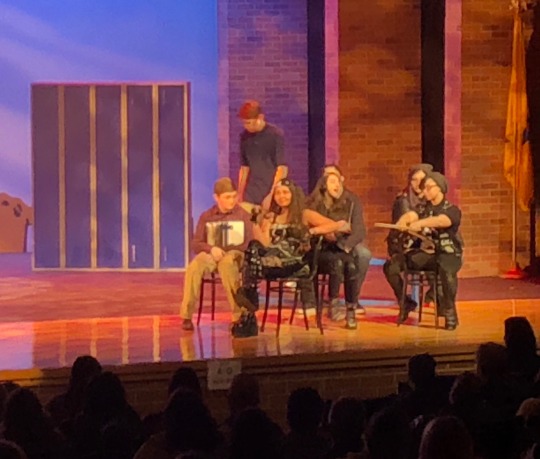
Kudos to Max Stubbe in the background creating a character that I definitely wanted to know more about. Everytime they were onstage I really hoped that their monologue would start but it never did. Thanks for making me smile!
We want to reiterate that we saw kids do an amazing job trying to relate to characters that they've never seen before. This is not to say there aren't similar kids in high school or America however those kids are three dimensional and to ask them to become one dimensional on a stage is hard. They have to bring way more into the story than the writer did. And that's what we want to celebrate right now. We're very proud of all these kids.
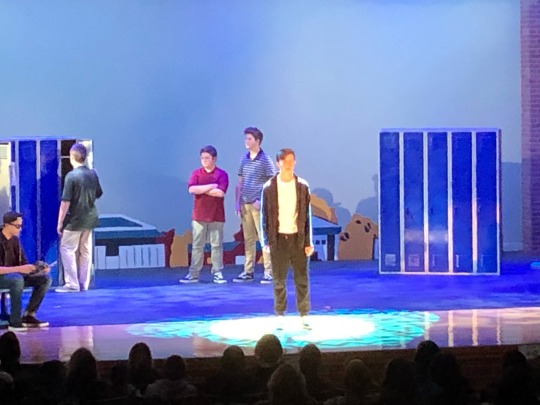
Costumes by Cynthia Kahn actually did make my life. Having lived through this decade as a kid I may or may not have worn these clothes once (I also may or may not have been a Howie). Thanks for taking me on a trip in the Way Back machine.
Kudos to set design by John T. Stephan and Jen Tracy who was also Head Scenic Artist. The minimal set design really served the production well while still being very visually interesting.
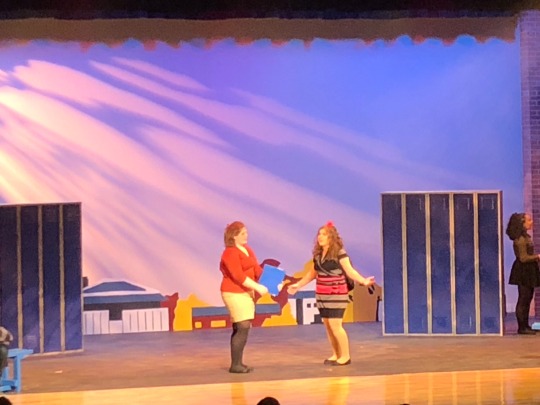
You really should see this show. It is a great example of good young performers delivering solid textbook performances through the support of an artistic staff that only wants to see them shine! Please come out and cheer them on!
1 note
·
View note
Text
On the Fourth Wall and Transformative Works in RPF Fandoms
The fourth wall is a massively complicated area, which engages debates around fan labour, the power dynamics between TPTB and fandoms, the power dynamics between celebrities and celebrity oriented fandoms and the silencing/shaming of transformative works, specifically erotic fanart and fanfiction.
Derived from the abstract notion of the fourth wall in the theater (i.e. the three walls of the stage and the ‘invisible’ wall between action on stage and the audience) discussions of the ‘fourth wall’ have extended into film, television and take on its own definition as part of fandom parlance, with its increasingly more illusory and permeable construct in today’s social media driven world.
Fandoms are under more scrutiny than ever as non-fandom people pick up on intra-fandom activities and ships, and the fourth wall disintegrates as a result. It’s not just fans that break the fourth wall. It’s frequently dismantled by celebrities, the media, talk show hosts, TPTB and so on. There are a lot of convincing articles that suggest the fourth wall actually should come down, because clinging on to its last bricks heightens the sense that we should be ashamed of creating fanfiction, fanart, vidding and so on, particularly stuff with an erotic and/or ship focused slant. However, I think the conversation, when it comes to RPF, is different.
Here’s why.
Celebrities who have no real understanding of fandom space, often get weirded out when they find they are the subject of RPF fanfic. In a hot button moment in my early days of being active in this (Radio One RPF) fandom, I expressed views on that which I have since refined. Honestly, I do think a bemused response is understandable from people with zero knowledge of the role of fandoms in pop culture or the creative freedoms those spaces have historically provided to participants operating within them. Where I sit now is that I wish celebrities who benefit enormously from a large fandom with a significant transformative element might invest a little time to work out what these spaces are all about, and certainly not disingenuously exploit those spaces for humour and/or financial gain, but I get the understandable moment of not being sure what’s going on and reacting in a way that doesn’t jive well with fandom. By way of early caveat I’m also stripping out debates around any kind of harassment (ship related, stalking and so on) from this post, because if I haven’t been abundantly clear about it before, I think that is NOT okay. This post focuses on the celebrity response to RPF - real person fiction - and specifically erotic works of fanfiction. It does not deal with how celebrities might respond to attempts to establish any kind of ‘real person fact’, because that’s a whole different ballgame. FWIW, on that, I’m with V. Arrow’s excellent essay on RPF in Anne Jamison’s ‘Fic: Why Fanfiction is Taking Over the World.
Some celebrities have been confronted with the information that the fictional characters they play are the subject of transformative works, and even that breaking of the fourth wall has historically not gone great for fandoms. With the exception of some fandom darlings like Tom Felton in Harry Potter fandom, it has frequently been met with the dreaded ‘no homo’ response or convention circuit engagement which makes fandom at large feel ashamed for seeing slashy potential in subtext. As much as people want to hold creators to account for capitalising on large slash ships without offering any meaningful endgame, there are also large portions of those fandoms that wish those questions wouldn’t get asked in public forums in the first place, because of the spectacular potential they have to go wrong. See, Jensen Ackles on bisexual Dean Winchester, William Shatner on Kirk/Spock, Benedict Cumberbatch on Johnlock, the Phelps twins on Weasleycest and countless others.
The difference with analysing how these conversations play out in the case of the examples above and RPF, is that the former engages debates around text/subtext, queer readings of texts, authorial control over narrative, queerbaiting in media and so on. There are undoubtedly all kinds of blurred lines which include debating the utility of shutting down slash ship questions in fan-driven forums when shows actively play with those ships in canon, the issues with framing shipping as activism and so on, but these are all big topics in and of themselves. The tl;dr is that celebs can get weird about transformative fandom activity, even if such fandom activity is centered on the fictional characters they portray. When it comes to transformative works in an RPF context, you might argue the image a celebrity cultivates as a fiction in and of itself and to an extent there is an artificiality in terms of what gets presented to the world at large, but fundamentally, a lot of the language we use to talk about fictional narratives doesn’t easily translate in the context of real people, because they’re not fictional characters. They are real people, living real lives.
That’s not to say I think people creating transformative works in RPF fandoms should feel more squeamish about doing so, but I do think the conversation around the sanctity of the fourth wall is different in RPF fandoms. For a start, for some people part of being in an RPF fandom is actually all about breaking the fourth wall. Interacting with your faves in a publicly visible way is part of celebrity fandom. However, I question the extent to which it is appropriate/helpful to extend that celebrity/fan interaction to the workings of transformative fandom and the slashing, femslashing, shipping and headcanoning associated with it. Let’s be very real about the fact that if celebrities are responding negatively to what fandom does with its interpretation of the fictional characters they depict (and oh boy I have thoughts on that which I will shelve for another day), the potential for a celebrity to find erotic works of fiction about themselves or their friends weird must surely be heightened.
This is ultimately why, in my view, @ ing celebs about fictional ships and headcanons rarely, if ever, ends well, with the possible exception of celebrities who are fannish themselves - i.e. the ones who can speak back to fandom in their own language. It most frequently ends up in a situation where not only the person sending the original message - but the fandom at large - is led to feel like your fave disapproves of something you put a lot of unpaid labour into producing and feel proud of, and it’s a pretty awful feeling. I’m staunchly in defense of RPF and I will bring out all the receipts which back up my perspective if required, but I have no desire for any of the stars of my RPF fiction to ever become aware of the fiction I’m writing about them in real life. I don’t want their approval, I certainly don’t invite their censorship, and I ultimately produce transformative works for the people that are here for it, i.e. the people in fandom who want to read the stuff I write.
When it comes to debates about the fourth wall with fictional narratives, there’s an element of holding the fiction to account, of exploring how shipping finds its way into the narrative but the actual (invariably queer) ship doesn’t. That is all part of a broader campaign for diversity in media, which in and of itself is loaded with the complications of vitriolic ship wars, skewed perceptions of fan/creator control, investing in commercially viable content where the queerness resides within subtext and is hyped within fandom space as opposed to less commercialised and already diverse queer content and so on.
With RPF and the fourth wall, you strip away a lot of those issues around diversity in media because - aside from debates about problematic faves - your faves just are. The fiction that exists is the facade of celebrity, but it has a real person behind it all and the possibility of ‘changing the narrative’ doesn’t hold weight in the same way as it does with fiction. For many celebrities their ‘celebrity’ image is very much part of showing the world their authentic selves.
When the transformative side of RPF fandom intersects with the actual celebrities in question, I always come back to who benefits from the works produced within these communities. Aside from the arguments about the financial benefits a large ship can wield, primarily, transformative works offer a space of great creativity, solace and freedom for the participants within those fandoms. That’s the thing I feel most strongly about protecting. When celebrities are confronted with transformative works featuring even the characters they represent on screen, let alone fiction or theories about themselves or their friends, their response to that has the potential to upset the fandom at large, and that just makes everyone feel like shit. I would dearly love to see the fourth wall as an impenetrable construct in these spaces for that reason, but it’s not always to be. This post is a slight subtweet to something that happened in the particular fandom I’m in today, but it has, I hope, broader application.
I struggle to see the upside of showing RPF celebrities transformative works featuring them, but, if you have counter perspectives, please do share. I’d love to know your thoughts.
#fourth wall#ugh#i promised myself i would stop having Opinions#for a while#i just think this topic#is actually interesting
70 notes
·
View notes
Text
Photo Essay: Queerness in Disney Villains
The focus of these images is on how Disney villains are incidentally queer, and how this representation reflects a negative image for queer people. Generally, villains are conquered by heteronormative characters, whether that be through a failed plan or death. This is harmful because it paints queer people in a villainous way and as being defeated by hetero-norms rather than accepted. Disney should move away from only having queer representation in the form of a villain and instead, have queerness portrayed across all types of characters (protagonist, side characters, etc). This will give more positive representation for those in the LGBTQ community, making Disney a more inclusive fantasy world. This approach is more effective in embracing queer identity. The characters we will be focusing on will be grouped into three categories: ambiguous relationships, mannerisms and gender roles, and breaking notions of normativity.
Ambiguous Relationships:
These images portray different characters that have relationships the audience may deem ambiguous. These relationships are not heterosexual ones either, making them appear queer. Though none of the texts outright say there is a relationship between these characters, there are moments that feel outside of heteronormative traditions.

(Gaston and Lefou, “Beauty and the Beast”, Disney, 1991)
This image is from the song sequence in Beauty and the Beast (1991) where Gaston basically brags about how manly he is. However, though the song focuses on his “manliness” there is a moment in which Gaston and his goofy henchman, Lefou, dance intimately for a moment. This moment is similar to the W.K.L Dickson short film of 1895 that depicted two men dancing intimately together. Benshoff and Griffin (2004) say, “Without a narrative context, the meaning of ‘two men dancing together is left open to interpretation. One thing is certain however-- the dancing pair is queer: they are not the usual expected heterosexual couple” (p. 6). Different from the “dancing pair” video, Gaston and Lefou do have a narrative that may challenge their queer image (since Gaston is actively chasing after Belle). However, as the text states this moment does not have a heterosexual pairing and features two men, making them queer.
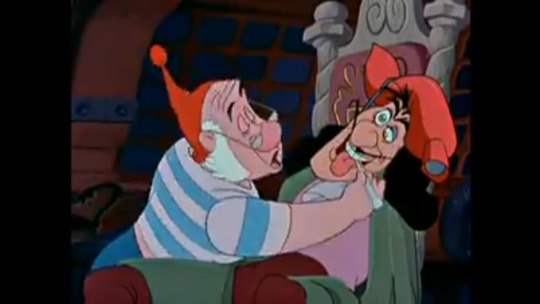
(Captain Hook and Mr. Smee, “Peter Pan”, Disney, 1953)
There has been much speculation from Disney fans that Captain Hook could be gay due to his flamboyant mannerisms, but when one takes a closer look at his relationship with his first mate, Mr. Smee, it is clear that they are extremely close (Benedict, 2017). What is queer about their relationship is the way Smee dotes on Hook, something that is characteristic of the gender roles of a woman. Seen here, Smee is taking Hook’s temperature while Hook is feeling unwell. The purpose of Smee’s character is to be the person that cares for Hook, the way a woman stereotypically cares for a man in a heterosexual relationship. Hook, on the other hand, is the leader and provider of the crew (what could be seen as a family). Having them be two male characters that embody the heteronormative traditions of a man and woman is what makes their relationship queer and ultimately relates to the historical use of queer gender-bending as a technique to gain laughs as well as to signify evil (Benshoff & Griffin, 2004, p. 7).

(Ratcliffe and Wiggins, “Pocahontas”, Disney, 1995)
Ratcliffe and Wiggins are both queer characters due to their mannerisms. Ratcliffe portrays a flamboyant image that is not of traditional masculine stereotypes due to the way he dresses and enjoys “finer things”. He does not follow the rugged, hard working stereotype that heteronormativity often gives. Wiggins also has a queerness about the way he acts, but it is different from Ratcliffe. Rather, Wiggins likes things that are stereotypical of gay men/of being “girly”. Here, he is offering that Ratcliffe and Wiggins give gift baskets. He also is seen making a unicorn shaped bush, bathing a dog and talking cutsey with it, and getting teary-eyed when Ratcliffe is taken away. These interests deviate from stereotypical masculine interests, making Wiggins queer. Together, Ratcliffe and Wiggins create a queer duo, with Ratcliffe being the snobby,arrogant stereotypical gay man and Wiggins being the flowery, girly stereotypical gay man. They are not openly gay, but connotation is a tactic often used in film to deal with onscreen homosexuality, that makes the characters more queer than openly gay (Benshoff & Griffin, 2004, p. 7).
Mannerisms:
With the following images, we can see how characters are made inherently queer through their mannerisms. Disney uses stereotypes of queer people such as their behaviors, to reinforce stereotypes of queer people. Cover (2004) discusses how “stereotyping reduces individuality and diversity, into wrongful notions of behavior” (pg. 81). In class, we’ve discussed how queer people are represented: flamboyant, hyper feminine, fashionable, etc. By assigning queer people these stereotypes, and by continuing to portray characters with these stereotypes, we will continue to see these mannerisms and behaviors as negative.

(Scar, “The Lion King”, Disney 1994)
This gif shows Scar from The Lion King. In this scene, Scar is speaking XXX. One way Scar is made incidentally queer is by the placement of his paw. He has the back his paw placed on his forehead, and his eyes are closed. From the gif, it looks like he is speaking dramatically. Queer people, gay men in particular, have been typically portrayed as over the top and dramatic. In this scene with Scar, we can see this stereotype being played out. Because By portraying queer men as “drama queens,” we are reducing their emotions down to say they aren’t valid because showing emotion is only acceptable for women. By doing this, we are also saying that drama is only associated with women. This actions continue to place gender roles on both men and women, and acting out of your gender roles is queer.
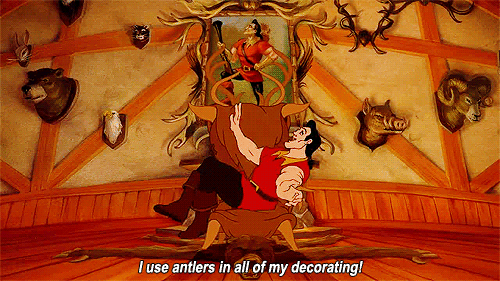
(Gaston, “Beauty and the Beast” Disney, 1991)
This GIF shows a scene in Beauty and the Beast where the villain Gaston is upset about Belle’s behavior; she rejected him in public and now he sits in a pub is singing about how great of a man he is. His friend Lefou is joining in on the song and gets other men in the pub to sing about Gaston as well, making the entire scene fairly queer. In this GIF specifically, Gaston is acting queerly from your traditional, heterosexual, masculine, male. While Gaston’s physique is that of a traditionally masculine man, his mannerisms suggest queerness. Gaston sits on the chair, with his leg pointed in a feminine manner. He is also singing about using antlers in all of his decorating. Traditional gender roles assume women do housework, including any decorating. In the GIF, Gaston is breaking gender roles and is inherently queer while doing so.

(Hades, “Hercules”, Disney, 1997)
In this image, the villain Hades from Hercules is inherently queer by the way he dresses, and holds his drink. Hades sits on his “throne” and sips what appears to be a martini. A stereotype of gay men, is that they drink “girly” drinks including martinis. Hades’ drink is pink yet he is portrayed as blue. Historically, blue is associated with boys, and pink is associated with girls. This juxtaposition of color as well as Hades’ mannerisms, questions these roles of gender. Hades’ clothes also questions normative gender roles; Hades’ wears a long garment that resembles a dress. As we know, dresses are “for women.” His neckline is also fairly low-cut and shows off parts of his skin. One stereotype with gay men and queer people is that they can be hypersexual and show off lots of skin. By having Hades break these normative gender roles, he is inherently queer.
Breaking Notions of Normativity:
In these images, we can see how Disney used villains and the concept of villains, to queer their films. By queering films, we are gaining representation for queer folk, and we are also breaking away from historical representations of characters. However, using the representations of queerness for villain's only is not something Disney should continue doing. We can see how much representation matters, and how Disney is creating breakout texts through their representation that is beginning to deviate from exclusively villainous roles.
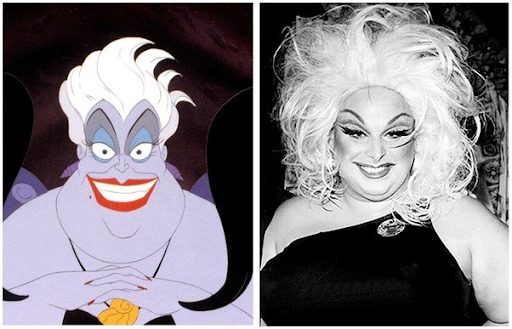
(Ursula, The Little Mermaid, Disney, 1989, and drag queen Divine)
In the 1989 film The Little Mermaid, the villain Ursula was modeled after drag performer Divine. This depiction is a double edged sword because on one end, basing a character off a queer personality means representation. Making them a prominent character forces a dialogue that couples with the AIDs epidemic at its height. However, this depiction is ultimately harmful because the representation affirms the notion that queerness is a villainess trait. Furthermore, this depiction was strictly visual as Divine was not going to voice the role. This ultimately harmful depiction relates to DeClues notions of visibility, “The violence of erasure, the refusal of visibility, the pain of a contingent inclusion.”.The result is a villain whose inspiration blurs notions of normativity, but only for the sake of harming queerness.

(Te Ka, The central antagonist of Moana is full of fury and rage. Her spirit is eventually quelled when Moana tells her of her true identity)
Moana is a unique in the world of Disney. In many ways, this film queers the very tropes Disney is known for founding. With Pacific Islanders as the central cast, the film breaks the mold of standard western depictions of Disney Royalty. Moana is also unique because her Disney princess status is not correlated with a Disney prince. Furthermore, her final conflict with Te Ka does not involve the classic Disney Fall. The Fall is a trope where in a Disney villain falls to their death. This releases the protagonist from accountability or moral ambiguity. Instead Moana reminds Te Ka with who she really is through the song “Know Who You Are.”
Based off of these unique perspectives and the commercial success (grossing over $640 million), one could argue that Moana serves as a breakthrough text. Cavalcante notes this relevance in Communication Culture and Critique. “...Beyond their content, breakout texts are largely defined by their reception, their use, the sociality they facilitate, and their everyday life context.” This example shows that breaking notions of normativity, can be successful.

(The news anchors in Zootopia, a cheetah (predator) and a moose (prey))
While this example is not a villain, we can see the villainization of predators in Zootopia. The central conflict involves society that villainizes predators and looks to wedge a division between the population; predators vs. prey. In the above image, there is something that can be considered as progressive; we have a predator cheetah, co-hosting the news with a moose (prey). This is inherently queer because it breaks the barriers between predator and prey, similarly to how barriers may be broken between heteronormativity and queerness.
Disney is willing and able to make accommodations. The strength of representation cannot be stressed enough. Each region can find something to relate to. The benefits of this depiction also come in the form of normativity. These anchors do not have an impact on the story. They are neither antagonist or protagonist. Instead they exist on a periphery that enforces diversity is normal, commonplace, and apolitical.
Conclusion:
Although Disney is moving toward more “queer” representation in their animated films, there is still progress to be made. As these images show, Disney has primarily used villains as a way to portray queerness (likely not even intentionally) and that is problematic for the queer community due to the negative connotations villains have. Disney needs to make a move toward including queer characters in protagonist roles so that there may be positive representation for queer audiences to relate to. It need not be made a huge event or publicity stunt, but it could be done tastefully in a way that makes it present without becoming problematic as well as being the forefront and not just background characters
Resources
Benedict, R. (2017, March 3). “13 Classic Disney Characters Who Were Probably Gay”. Retrieved from https://hornet.com/stories/classic-gay-disney-characters-probably/
Benshoff, H.& Griffin, S. (2004). “Queer Cinema, The Film Reader”.
Cavalcante, A. (2017). Breaking Into Transgender Life: Transgender Audiences’ Experiences With “First of Its Kind” Visibility in Popular Media.
Cover, R. (2004). Bodies, movements and desires: lesbian/gay subjectivity and the stereotype, Continuum: Journal of Media and Cultural Studies, 18(1), 81-97, DOI: 10.1080/1030431032000181012
DeClue, J. (2017). To Visualize the Queen Diva! Transgender Studies Quarterly, 4(2).
Goldstone, A. D., Hahn, D., McArthur, S., Schumacher, T., Allers, R., & Minkoff, R. (1994). The Lion King, United States: Walt Disney Pictures.
Goldstone, A. D., Clements, R., & Musker, J. (1997). Hercules, United States: Walt Disney Pictures.
Hanh, D., Trousdale, G., & Wise, K. (1991). Beauty and the Beast, United States: Walt Disney Pictures.
King, B. (2017, October 9). 10 Fictional Characters Surprisingly Based on Real People | Film Daddy. https://www.filmdaddy.com/all-articles/characters-based-on-real-people
2 notes
·
View notes
Text
Avengers: Infinity War or Just by Force of Numbers This Has to Work out, Right?
I had my trepidations about Avengers: Infinity War; there were so many characters to squeeze in that I worried a cameo-fest might take the place of a cogent plot My fears, however, were unfounded, as I felt the story held together well and the characters’ interactions were a good balance between genuinely personal and goofy one liners. The women - although vastly outnumbered, there are roughly three times as many named male characters as female - continue to be the strong heroes we know and love.
*Avengers: Infinity War spoilers follow*
Perhaps most prominent of the female line up is Gamora (Zoe Saldana). Once again, she demonstrates a variety of admirable qualities, including martial prowess and perhaps the most pragmatism out of any of the Avengers - she is quick to break up the man-off between Peter Quill (Chris Pratt) and Thor (Chris Hemsworth) by reminding them that the whole universe is at stake; “Enough! We need to stop Thanos.” Gamora also demonstrates incredible strength of will and appreciation of the greater good, she possesses secret knowledge that could endanger everybody if Thanos (Josh Brolin) finds out, so she makes Peter promise to kill her rather than let her be captured. To do this, she holds Peter to the most powerful force she can think of, a female entity, the memory of his mother. Gamora is willing to sacrifice herself to protect innocent lives, and her only motivation that outweighs this is her love for her sister, Nebula (Karen Gillan). The sight of Nebula being tortured is the only thing powerful enough to move Gamora to divulging her secret.
Unfortunately, Gamora meets a tragic and untimely demise at the hands of Thanos. Even worse than dying so a man can have something to be sad about, she is murdered so a man can obtain mystical powers to use for evil. Gallant to the end, once Gamora realises Thanos’ intentions, she tries to kill herself so that his sacrifice will fail. Her death is all the more heartbreaking seeing as she has spent two films escaping, recovering and developing from not only the stigma of being Thanos’ adopted daughter, but also all the trauma she suffered at his hands. So, to be murdered by him out of a deluded sense of him mistaking a lifetime of abuse for love is such a cruel end for a magnificent and accomplished hero.
Nebula herself contributes a little to the good fight, violently despatching a few goons, but as far as the space-faring women of this film go, Mantis (Pom Klementieff) definitely comes in second after Gamora in terms of prominence. She is also one of the two female characters who have actual super powers - she is an empath and can manipulate people’s mental states to a certain extent, such as sending people to sleep. It was good to see her as the lynchpin of a plan, and not the butt of a joke, as she is one of the few characters who has any effect at all against Thanos, controlling his mind for an impressive amount of time. Mantis is also a source of comedy in Avengers: Infinity War, sometimes slightly at her expense, for example when she messes up the line, “We came to kick names and take ass,” but sometimes innocently too. One of my favourite moments was Mantis serenely enjoying the simple pleasure of low gravity in the background of a shot.
The only other female character with super powers is Wanda Maximoff, the Scarlet Witch (Elizabeth Olsen). She is portrayed as one of the most powerful characters in the films - the only one with the ability to destroy an infinity stone for example. She is also one of only two characters with the strength of will to kill a person she cares for deeply to keep Thanos from finding an infinity stone - Peter Quill is the other, but his assassination attempt is thwarted by Thanos. This is no mean feat, as her target, Vision (Paul Bettany), is not only her lover, but one of the few individuals on Earth who is as far from being a normal human as she is. Prior to this, Wanda not only has the capability to protect Vision in battle, but also to heal his wounds. Other than Thor, who is a literal god, and Thanos, who has a magical glove with the six most powerful objects in the universe stuck to it, she performs some of the most impressive feats in Avengers: Infinity War.
Other female characters openly admire Wanda’s talents; when she enters the fray in Wakanda and displays what she is capable of, General Okoye (Danai Gurira) exclaims, “Why was she up there this whole time?” Furthermore, Okoye and Natasha Romanoff, the Black Widow (Scarlett Johansson) support Wanda in combat. It filled me with joy to hear Natasha proclaim, “She’s not alone,” as she joins in the battle against one of the children of Thanos. It was a little strange how the fighting seemed to be gendered: female characters mostly only battled the one female child of Thanos, Proxima Midnight (Carrie Coon). As a side note, I did have to look her name up as I don’t believe it’s said out loud in the film, which is dumb, because it’s a very cool villain name. Also, the ratio of male to female children of Thanos introduced in this film was also 3:1. Proxima is portrayed as a strong and loyal adversary, her design as an alien was visually interesting and I think she was the last goon standing - the sheer number of different concurrent battles and the three toilet breaks my broken body had to take during this movie confused the timeline somewhat, so feel free to correct me if I’m wrong about that.
Natasha mostly showcases her multitude of combat skills in this film, which are undeniably remarkable, but we see very little of any other side to her. A slight nod to her brief romantic involvement with Bruce Banner (Mark Ruffalo) is the only glimpse to another side to her personality that we get. I do appreciate that this is a very ambitious ensemble movie, and that some male characters, for example Sam Wilson aka Falcon (Anthony Mackie), receive similar sidelining treatment. Speaking of romance, there does seem to be a need to couple everyone off - Peter Quill and Gamora unquestionably confess their love out loud and Wanda and Vision are established lovers since we last saw them. Part of this is natural character development, but I can’t help but imagine the vast, corporate hand of Marvel picking up its action figures, smushing them together and demanding, “Now you kiss, and you kiss.”
A good example of a woman who does manage to show different facets of herself in the limited screen time she has is Okoye. As previously mentioned, she is an adept soldier and remains a loyal general to T’Challa aka Black Panther (Chadwick Boseman), but she also has a sense of humour. She is responsible for one of the moments that made me chuckle, confessing that her expectations regarding a public Wakanda were different to reality and included, “The Olympics, maybe even a Starbucks.”
Okoye’s fellow Wakandan, Shuri (Letitia Wright), princess and chief scientist - what a combo - also makes a reappearance. Once agin, she does not have a huge amount of screen time, but in it she accomplishes the notable feat of establishing herself as possibly the most intelligent person and distinguished scientist in the MCU. She forces Bruce Banner to admit that he and Tony Stark (Robert Downey Jr.), arguably the previous holders of that title, didn’t use her more effective solution to a problem because they, “Didn’t think of that.”
One final named female character makes an appearance in Avengers: Infinity War, although she is the first one we see on screen. The long suffering Pepper Potts (Gwyneth Paltrow). Pepper makes a very brief appearance alongside Tony, reasserting her position as probably the most sensible, level headed and pragmatic individual - characteristics that could easily be underestimated in a universe of ridiculous super heroes. She successfully talks the somewhat manic Tony down from thinking they should have a child, arguing - quite rightly - that having a dream about becoming a parent is not a good enough reason to actually do so and basically that Tony can’t be trusted to be enough of a normal, sensible human to be a father.
It should also be noted that many of these women don’t make it out of Avengers: Infinity War alive, what with Thanos instantaneously disintegrating half of the population of the universe and all that. I’d like to point out the alarming order in which we see people die: Bucky Barnes (Sebastian Stan), a physically disabled - if not possibly ageless - and deeply traumatised man; T’Challa, a black man; Groot (Vin Diesel), a non-human alien; Wanda, a woman; Sam Wilson, a black man; Mantis, a female alien; Drax (Dave Bautista), a non-human alien and then finally three able bodied, white, human men - Peter Quill, Doctor Strange (Benedict Cumberbatch) and Peter Parker aka Spider-Man (Tom Holland). We also see Agent Maria Hill (Colbie Smulders) and Nick Fury (Samuel L. Jackson) - you guessed it, another woman and black man - disintegrate in the post-credits scene. I just wanted to take you on the emotional roller coaster that I went on, when I thought we’d just be left with mostly white dudes for the sequel. I doubt that any of these characters are permanently dead, as Marvel has many more money-spinning movies up its sleeve, and I’m willing to bet they wouldn’t do away with so many lucrative franchising opportunities in one go. Hopefully, the same can be said of Gamora - I’m already working on a theory that she is the soul inside the soul stone and, when the time is right, will somehow escape and be the one to end Thanos. Just floating some ideas about, Marvel, feel free to use them.
Overall, despite battling a terrible gender ratio on top of the forces of evil, the women in Avengers: Infinity War showcase an incredible smorgasbord of wondrous attributes between them, including: martial prowess, empathic talents, the weaponisation of pure energy, scientific aptitude, humour, loyalty, common sense, healing powers and selflessness to name but a few. They are exemplary heroes who mange to stand out and hold their own in an overwhelmingly large ensemble cast, in which they are vastly outnumbered by men. I’m just still pissed off about Gamora’s death though - can we not reward triumphant survivors of trauma with murder at the hands of their abusers, please?
And now for some asides
I love how much all of the Guardians of the Galaxy characters, regardless of gender or species, completely adored Thor - he is like a pirate had a baby with an angel!
The continuity of Rocket’s (Bradley Cooper) obsession with prosthetics is beautiful, it’s so good that it was actually useful in this film, and the plot I’m most excited about in the sequel - other than resurrecting all the ladies please - is will Rocket ever get Bucky’s arm? The people demand to know!
My favourite part of this whole film was the sign that said, “We will deep fry your kebab,” in the Scottish chippie.
#avengers#avengers infinity war#sci-fi#scifi#science fiction#super hero#marvel#MCU#film re#movie review#feminism#Zoe Saldana#gamora#Chris Hemsworth#thor#Chris Pratt#peter quill#star lord#Josh Brolin#thanos#karen gillan#nebula#Pom Klementieff#mantis#Elizabeth Olsen#scarlet witch#wanda maximoff#paul bettany#vision#Danai Gurira
17 notes
·
View notes
Text
thoughts on thor: ragnarok
I’m gonna preface this by saying that I really really wanted to like this movie. Like. Really.
But, as the Rolling Stones once said, we can’t always get what we want.
Be warned, this is long af.
Hits:
--Valkyrie--um, lethal, gorgeous, haunted by her past? Yes please. I’ve been a sucker for that one since my Xena fangirl days. Her bond with Hulk was also funny and warm (”Angry girl!” made me smile, the more so because she seemed less angry around him.) It was nice to see somebody having fun around here.
--Hela-- Her costume was epic. I was antsy about what they’d do with her clothing, given that it can be pretty, uh, minimal in the comics sometimes. Fortunately that didn’t happen here. She was equal parts scary, funny, and seriously badass, and i enjoyed the parallels between her relationship with Odin, and that of Loki and Thor.
--Grandmaster was fucking hilarious and occasionally cruel, and who knew Jeff Goldblum could rock blue eye makeup like that?
--Fenris. I still wanna pet the puppy. Even undead he is floofy and gorgeous.
--Thor having to see Hulk naked. That’s karma, asshole.
--Loki’s costumes were fantastic, and his ability to be equally resilient yet able to charm his way into the Grandmaster’s good graces (and STAY there, since the Grandmaster is fickle af) is one of the few things about him that stayed in-character.
--It’s nice to see Loki supporting the arts in Asgard. Also, eating healthy is important. U go Loki.
--Matt Damon had the role of a lifetime as Loki. He may as well end his career now, since it’s not gonna get any better than that.
--Odin’s death scene was really beautifully done. Even if Odin suddenly being about to die made no fucking sense. At least he doesn’t seem pissed at Loki, and let us have a nice little moment between them.
--I liked the acknowledgement that Odin’s power and wealth has a really ugly history. For all Asgard’s beauty, it’s built on something truly hideous.
--Loki: “You had ONE JOB.”
--Thor is right about Hulk’s room and its stylistic choices. It was ugly af.
--Literally everything Heimdall. He gets better with every film, but goddamn does he need more scenes. Still, his hair looks great and he’s the unsung hero of the film.
--Thor losing his eye and becoming more like Odin, but hopefully better. Also, harnessing his lightning/thunder powers fucking ruled.
--”Oh? You’re the God of Hammers now?” Odin pls stop making me laugh. I’m trying to hate you over here.
Misses:
Oh boy here we go, strap in kiddies.
--Odin’s power and legacy is shown, as mentioned above, to come from true ugliness, and yet? He doesn’t have to answer for it at all, and instead dies a peaceful death. I liked that scene, don’t get me wrong, but what the fuck?
--Really, Loki? Skurge was the best replacement you could find for Heimdall? Maybe try Ziprecruiter or something next time?
--Thor. Um, has anyone seen this guy? Do you think he knows that some douchebag stole his outfit and is douching his way around the multiverse pretending to be the God of Thunder for most of the film? More on this later.
--Why would the realms have gone to hell after Loki assumed the throne? Nothing in his past within the films indicated to me that he’d be a poor ruler, certainly no worse than Odin. He might get bored with it, and come to dislike it, but Loki can and does do many things he doesn’t particularly like, and does them well. (Exhibit A: playing second fiddle to Thor, etc.)
--How the fuck did Loki’s spell drain Odin of his magic? Also, if Loki is that powerful, how the fuck did Dr. Strange manage to trap him for 30 seconds, let alone 30 minutes?
--Seriously, Odin’s death made no goddamn sense. At all.
--I’m calling a bam on Thor saying “I have a feeling it will all work out fine.” THOR. IT GETS WORSE AFTER YOU SAY THAT. EVERY TIME. STOP.
--Dr. Strange’s cameo was a waste of my fucking time. That’s like 20 minutes of my time that I will never get back. You’d think, being such an experienced actor, that Benedict Cumberbatch’s American accent would be way better, but it sounds awful. Like, really really awful. I’d rather fall for 30 minutes with Loki than have to listen to that auditory nightmare again.
--Who was Hela’s mother? (I mean given that her father is Odin, her mother could be pretty much ANYONE.) Not a big deal that we never found out, but it annoyed me anyway.
--Are we gonna talk about how Hulk has spent the last two years fucking murdering people?
--Also, how the fuck did Odin convince an entire kingdom (or NINE) that his daughter never existed? I’m assuming magic, but as the writers didn’t give enough of a damn to think this was worth explaining, I’m not about to theorize and do their job for them.
--WHY DID I HAVE TO BE SUBJECTED TO HULK’S NAKED ASS? WHAT THE FUCK DID I DO TO DESERVE HAVING TO SEE THAT WITH MY OWN EYEBALLS. THIS IS NOT OKAY.
--The Warriors Three died the most pointless fucking deaths ever, literally for no goddamn reason. There was no need to kill them off, since it would have been perfectly logical for Thor to send them to various parts of the realms to restore peace. Honestly, the only reason for their deaths that I can fathom would have been to increase Thor’s grief, but we never see him learn of their deaths or mourn them, so that can’t be it. Again, pointless.
Remember when I said I’d talk about Thor’s OOC behavior later? It’s later. And OH BOY do i have a lot to say.
--I’m about to contact the authorities and put in an MIA search for Loki and Thor’s character development. It was nowhere to be seen in this film. They were just tossed straight into their old cycle of betray, threaten, beat up. It’s stupid as fuck, and I’m really fucking annoyed that I have to sit through this again. Sometimes it’s entertaining but at this point? It’s just tedious.
I’d also like to point out that the initial relationship presented to us in the first Thor film was really not that cycle. It’s vaguely hinted at, but not completely spelled out. There was genuine love and affection punctuated by the occasional prank, but that’s pretty much all I got. While I recognize that the cycle is a central theme in the comics, the film versions are very, very different. That said, it makes giving the film characters the storylines of their comic book counterparts is a tricky business that needs to be handled a LOT better than it was here.
Spoiler alert: It was not handled well here. At all.
Oh, then there’s Thor’s repeated line of “That’s what heroes do”, which was reminiscent of this:

Not a great parallel to evoke, guys. I’m just saying.
Because last time I checked, heroes don’t leave their brothers tazed and convulsing on the floor. That’s not a hero move, that’s a dick move. Thor is supposed to have evolved from that, and bringing it back for the sake of punchline just feels like a cheap-ass way of getting laughs. (Yes, there’s the possibility that they planned this together, but again, I’m not wasting my time honeypotting for hack writers.)
I mean, the Thor we’ve been presented with so far is warm-hearted and smarter than most people think, and he does his best to make things right when he fucks up.
Except for this movie, apparently.
Also, while I didn’t mind Loki’s ‘looking out for ME’ mindset (it’s one of the few things that actually made sense--I mean fuck, who else is gonna do it?), Thor’s surprise at it was kind of ridiculous. What the fuck did you expect? It’s like he totally forgot that, at the end of the first film, he realized his role in inflicting damage onto Loki that helped to make him into what he was.
Instead it was like:

Um yes. Yes it fucking does. Does this negate Loki’s choices, or his actions? Fuck no. But it did play a role, so let’s at least acknowledge that, shall we? Having said that, it’s logical to conclude that continuing the same behavior that inflicted the initial damage is counterproductive at best. And a shitty creative choice if ever there was one.
Thor’s anger over Odin’s death, and Loki’s supposed causing of it (albeit intentionally) made sense, (i guess? i didn’t understand Odin’s death scene in case u hadn’t noticed) but it was done in such a weird way. “I hate you, oh no wait let’s banter, oh okay now i’m mad at you again, whoops no i’m not” all throughout the film. Conflicting feelings is one thing, but goddamn, pick a fucking flavor.
Also, what the fuck is Marvel’s issue with portraying psychological trauma? The way they do it, it’s like it isn’t even worth mentioning unless it can be played for laughs. (See: Naked Selvig running around in TDW, without much reference as to why he’s doing that. “Oh he’s naked hahaha”, yeah, let’s not treat this with any sympathy at ALL, good job Marvel.)
And in Loki’s case? Oh God. The whole scene where he sees Hulk again is just. So awful. That it’s played for laughs makes it worse. Loki getting his comeuppance from Hulk during the first film after trying to use him actually had purpose (Loki’s defeat and Hulk’s taking revenge at being used), but since he hasn’t done anything to Hulk during Ragnarok, it’s just not all that funny.
I mean, fucking hell, psychological trauma does have absurdities that can lend their way to humor, but doing it at the expense of the traumatized person is fucked up and gross. Whether or not the traumatized person is a nice person or not really doesn’t come into it. Or at least, it shouldn’t.
Myy good friend @icyxmischief has a lot of meta about this on her blog, and she’s way more eloquent than me, so please go read it. It’s amazeballs.
45 notes
·
View notes